admin
Staff member
Buy Now

In retrospect, I guess the title for this review should have been used for Sena Momentum EVO posting, but it fits here just as well.
Sena continues moving forward with some speed, what I call a ‘bit of a tear’, evidenced by the release of these Series 50 systems – the 50R and 50S with Mesh 2.0 features, and following close behind, new firmware releases for the 30K, Momentum EVO and +Mesh products bringing them into the Mesh 2.0 realm.
And for other outdoor activities, the Sena R1 EVO cycling helmet with taillight, along with the industrial oriented Tufftalk M, are now upgradeable to Mesh 2.0 specifications.
Although an arguable point, the new 50 Series systems aren’t so much revolutionary as they are evolutionary – most noticeable with the sleek low-profile Sena 50R. Along with the more standard or classic Sena 50S, current users and consumers have two feature-rich systems with outstanding communication technology from one of the leading industry players.
Over this last winter and into early spring there were lots of rumours and information snippets regarding the next new wireless helmet system from Sena and it (really) wasn’t a big secret that the next system would/could/should sport an upgrade to the original Mesh feature.
Thankfully, it all turned out to be true and mid-April saw the official announcement regarding the Bluetooth 5 based flagship 50 Series systems: the 50R and the 50S that did indeed feature Mesh 2.0 Technology.
And within another two weeks, Sena added two more enticements regarding the 50 Series release. The first announced the pending release of firmware updates to bring all current Mesh products up to the Mesh 2.0 baseline while the second identified a limited time 50R and 50S trade-up program for existing Sena 30K users but limited to US customers only – bummer.
Sure enough, with May-Day here and in connecting the Sena Momentum EVO helmet to its WiFi Adapter, the WiFi sync and charging LEDs came on as expected and, about two minutes later the middle (Firmware) LED indicated there was an update waiting.
I disconnected the helmet and proceeded to manually work through this eagerly anticipated update; five minutes later the EVO was communicating via Mesh 2.0 to both the Series 50 systems; a good confidence-building introduction to Mesh 2.0.
Not that I had a lot of concerns over Mesh 2.0 functionality. Well before the Sena 50 Series systems were released globally, Sena teamed up with BMW Motorrad for the International GS Trophy 2020 Event held 9 to 16 February 2020 in New Zealand where 140 top ADV riders from over 40 different countries formed 23 teams for this truly global event.
In what could be classed as both a bold venture and a pre-emptive marketing bid, Sena provided 100+ 50R systems, along with Sena SR10 pieces to provide Sat Phone connectivity for the event Marshals. The whole activity, and venture, was a resounding success for the event, teams, individuals, and Sena.
This is how you test, validate, and promote a product in real-time. This video testimonial is a good one to watch, as is this blog posting.
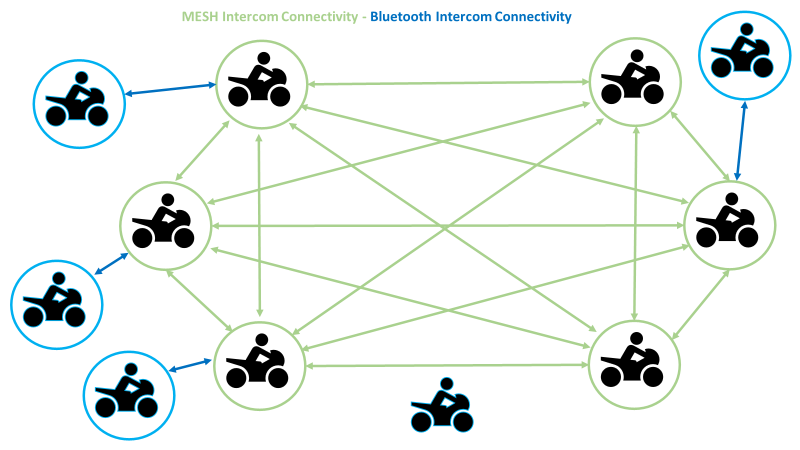
Sena claims that significant algorithm improvements provided by an ingenious method of confirming the receipt of data sent between Mesh 2.0 networked devices provide an increase of 80% more data packets within the network for a dramatic increase in overall intercom performance and inherent stability realized.
Essentially, each Mesh 2.0 connected device shares information, so each device is ‘aware’ of every other device (situational awareness personified) providing an adaptive and autonomous communication network based on Optimized Smart Routing Management.
This management approach has two key precepts: this ‘awareness’ between all devices allows Mesh 2.0 to select the optimal data path (minimal obstructions) to deliver messages; and relatedly, connected devices are constantly ‘polled’ to dynamically determine their presence and based on this information the best pathway for transmission is chosen.
Implementation of Mesh 2.0 also resulted in enhancements to and refreshment of the original Mesh modes. Mesh 2.0 Open Mesh Intercom now includes a multi-channel function allowing users to communicate across nine (9) discrete channels with a virtually unlimited number of ‘connected’ users in each channel. Note – the +Mesh operates with one primary channel only.
This new multi-channel feature addresses an issue that arises when other riders or rider groups are working in Open Mesh on the (default) channel 1 or primary channel, in that your group can now move to another channel in Open Mesh for secure communications without other user interference.
Within the same channel in Open Mesh or private groups in Group Mesh, six (6) users can talk at the same time. And the Group Mesh Intercom Mode now supports up to 24 participants (users) in a private communication group, although the six at a time talking rule still applies.
Sena states that the Mesh 2.0 features and capabilities provide a more robust and reliable communication system, with audio intercom clarity and sound quality significantly boosted thanks to optimal path planning that provides better reach resulting in fewer dropped messages (communications) due to obstacles and interferences.
The table below from the Sena website provides a very good compilation of the features, functions, and compatibility points of Sena Mesh and now Sena Mesh 2.0 capable systems.
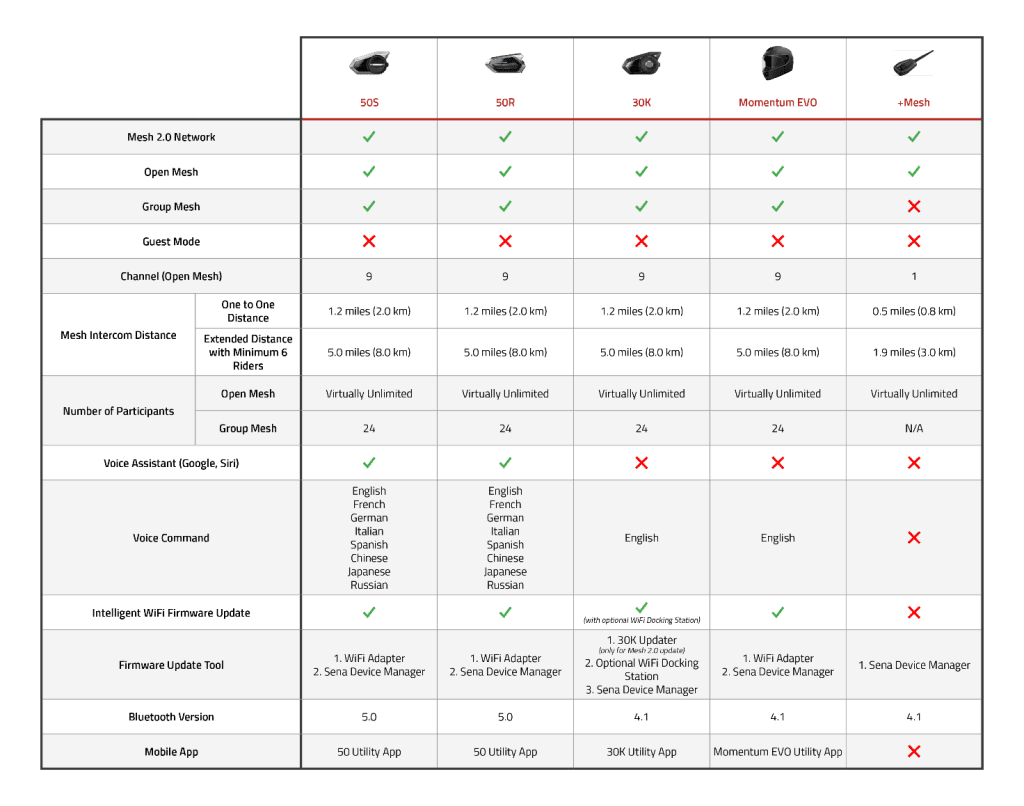
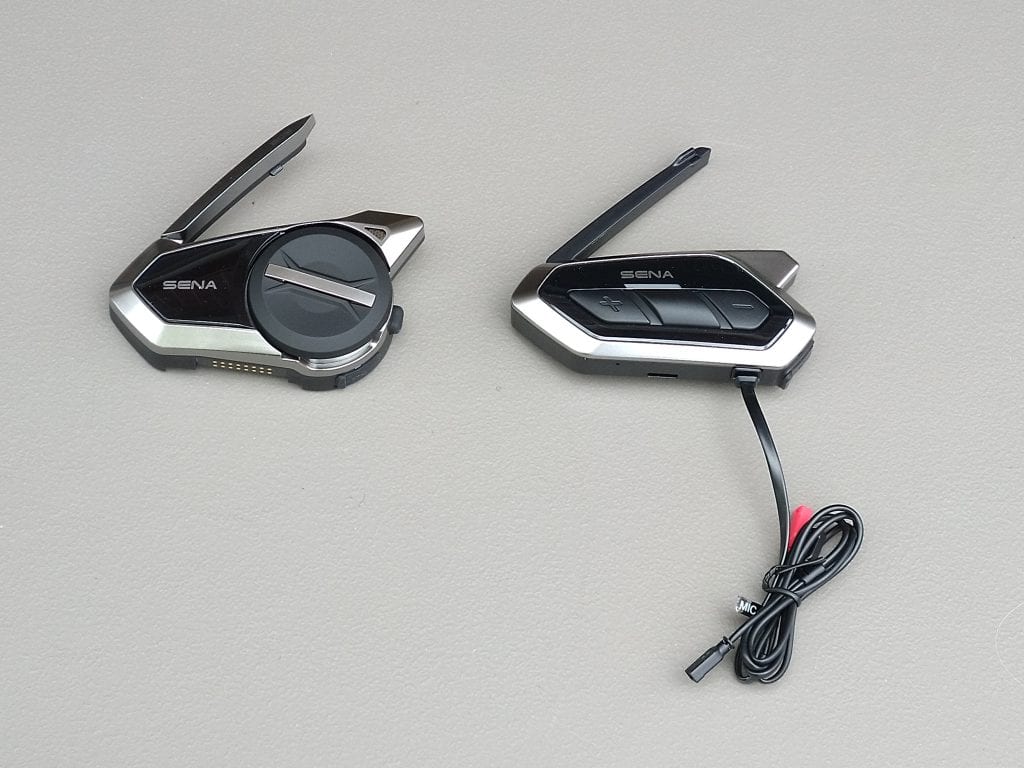
The smaller-framed lower-profile Sena 50 and the larger 50S with an updated version of the tried and true Jog Wheel are indeed visually different with distinct features and different mounting and headset component approaches.
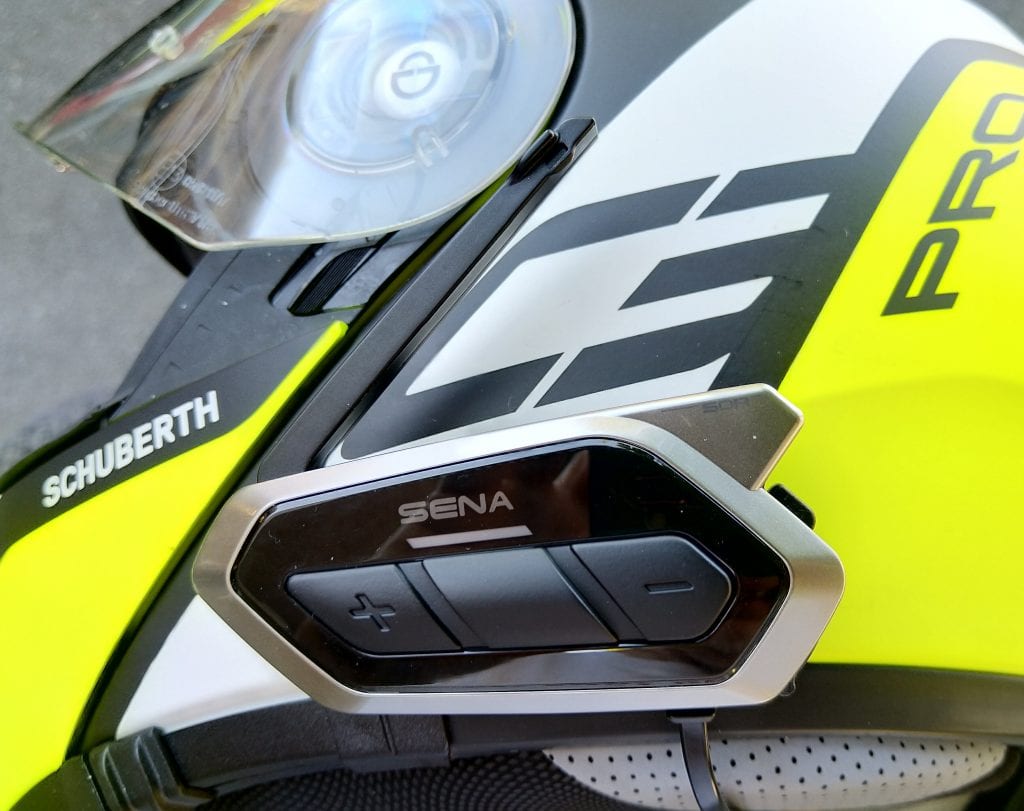
The Sena 50R is indeed distinctive compared to the more traditional shape and fitment of the larger classic or ‘standard’ 50S variant. Between its smaller sleeker frame and low-profile mounting option, there is a big difference in helmet footprint between the two 50 Series products.
A discrete and nicely shaped three button interface layout contributes the smooth look and flowing lines of the 50R, with the distinctly shaped front (+), centre and back (-) buttons matching the curve of the module and the face edge shaping.
Both variants are nicely finished with their glass-look black inserts and burnished finish of the housing, although between form and finish, the 50R makes the best first impression.
In keeping with its ‘R’ designation also used for the diminutive Sena 10R model, the Sena 50R utilizes a more direct close-fitting approach with two mounting options. One uses hook-n-loop pieces that put the module about 2mm away from the helmet shell; the second option is a thin slip-in piece (good for full-face helmets) that also keeps the module close to the helmet shell.
Two microphones are included with the Sena 50R kit – a wired boom and wired (thin wire) microphone, both using modular mini connectors.
The redesigned HD speakers, common to both variants, are a significant audio step-up regarding volume, bass, and clarity and, long overdue.
Other than the USB-C charging/data port, there are no external ports on the Sena 50R as found on the Sena 50S system that retains the 3.5mm auxiliary headset/earbud jack and the rear 2.5mm auxiliary input jack on the front and back of the base.
The 50R can support third-party earbuds or speakers in using the (optional) Earbud Adapter Split Cable (PN 10R-A0101) now listed for both the modular 10R and the 50R. This small adapter cable interfaces with the left & right modular speaker leads from the Sena 50R module terminating in a 3.5mm stereo jack to connect earbuds or other headset speaker sets.
The battery in the Sena 50R is smaller than the one used in the Sena 50S. The 50R battery rated at 8 and 13 hours (Mesh and Bluetooth Intercom use respectively) as opposed to the 9 and 14 hours for the Sena 50S. Both variants utilize rapid charging, thanks in part to the newer standard provided with the USB-C interface.
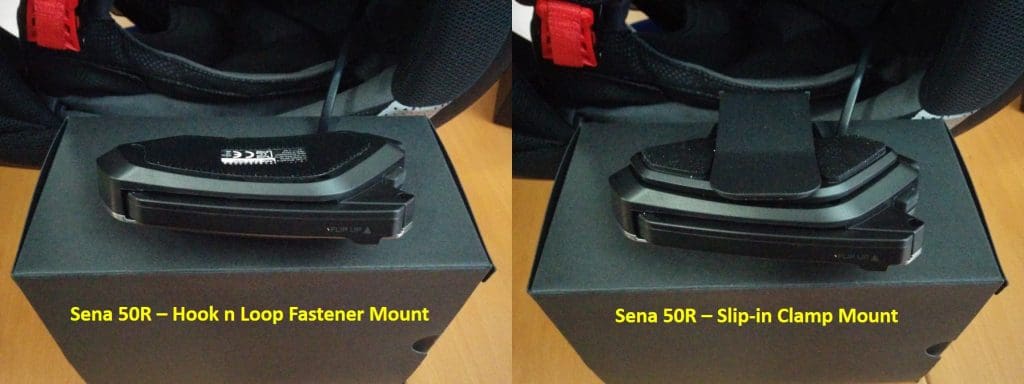
First up for helmet installation on to the Schuberth C3Pro (Echo colourway) is the Sena 50R, the low profile – smaller, slimmer and (lighter) weight member of the Sena Series 50 family.
It has more headset modularity (to a degree) and utilizes three vertical button controls along with the MESH activation button on the back sloped section, rather than Sena’s trademark Jog Dial/Wheel, Phone Button and top back Mesh button layout found on the Sena 50S and of course, the 30K edition.
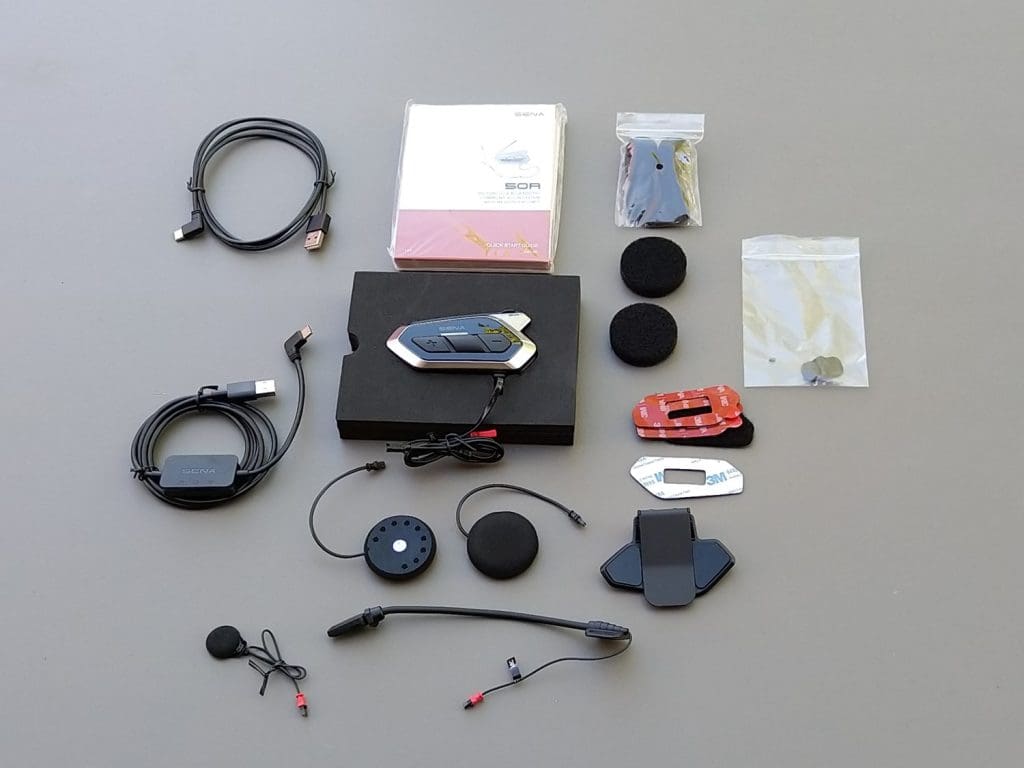
The favoured Schuberth C3 Pro is the first host for the Sena 50R system. After undoing the bottom front side snaps and separating the left and right liners from the inner shell wall (3 snap-in fasteners), the existing 30K headset is removed.
Once the base with boom microphone is separated from the helmet, the existing 3M Dual Lock sections mounted on the helmet and system base (my universal quick use solution) are also warmed up slightly (low heat setting on heat gun) and taken off and the mounting area cleaned.
These pieces provide the simplest and closest fitting mounting option for the sleek Sena 50R. After peeling off the cover of the adhesive-backed loop (brush) piece, it is laid in place on to the helmet shell and pressed down firmly.
The adhesive-backed hook section (with centre cut-out) is prepped and laid into place on the shaped slightly recessed area on the back of the 50R module. Make sure both adhesive pieces are pressed into place and always work around the edges as well. They should be left to cure for a few hours or overnight if patience permits.
Using these pieces is more permanent, although it does provide a bit more security (or should) – just remember the 50R can’t be easily removed from this mounting.
Take the double-sided adhesive piece (with cut-out), peel the backing off the module side first and lay the piece into place. Now peel the outer backing off and stick the adhesive piece directly to the helmet shell in the desired spot, just slightly behind the sun visor slider frame. Avoid touching the adhesive if possible and an overnight or 24hr curing period is good.
This new piece provides an expedient option when a mounting bracket can be slide in between the outer and inner shell layers as possible with many full face and some three-quarter style helmets. One of the shaped double-sided adhesive pieces is used here to secure the 50R module to the bracket.
The bottom of the 50R has a small recess on the lower helmet-side of the housing and there is a matching tab on the slide-in bracket. Before peeling the outer backing off the adhesive pad make sure the bracket tab is engaged in the 50R recess. Now peel the backing off the pad, align and press the pieces together firmly to accelerate the bonding.
After a suitable curing period, the clamp bracket with module mounted is positioned at the desired point along the left lower shell and the slide-in section slipped between the outer shell and inner liner. Make sure this can be easily and safely without damage to the helmet.
In looking ahead to the next installation on one of the full face helmets, the clamp/slide-in bracket is usable, but rather than using one of the double-sided adhesive pieces, a shaped piece of compatible adhesive backed ‘loop’ will be cut and mounted to the bracket so the existing hook pad backing on the 50R module does not have to be changed.
This will provide mounting flexibility between helmets, especially once a second 50R modular headset is procured. So, Sena – how about an extra set of module hook-n-loop pads in the kit?
The headset harness from the 50R is routed in along the back lower left of the encompassing neckroll – the hard-wire lower frame of the neck roll piece seals the bottom of the helmet preventing pass-through, so the harness comes in under the back left of the neckroll, an approach that has never been an issue in using the helmets.
With the cheek pads separated from the inner liner, the individual speakers are disconnected from their modular connectors and mounted in the desired position in the elongated speaker recesses – a great design feature truly facilitating accurate speaker placement for users.
Once the speakers in place, the long right harness lead is routed around the back edge under the headliner section, then both leads are connected to their speakers and tucked up inside the lower edge of the cheek pad on the left side.
The separate boom microphone is mounted along the lower left inner side of the liner utilizing previously installed loop sections and the hook-side microphone holder from the kit. The boom can be repositioned depending on desired placement of the foam-covered microphone.
Press the Centre and (+) Buttons at the same time for one second to turn the system ON or OFF.
System volume is controlled by pressing the Volume Up (+) button or the Volume Down (-) button for volume Down. Volume level of each audio source is set and maintained independently by the user (manually or using the App); the settings are retained even when the system is turned rebooted.
When the 50R is OFF, press and hold the Centre Button and (+) for three seconds, the alternating Red/Blue flashing sequence appears indicating pairing mode. Put your mobile device in BT pairing mode (if needed) and select Sena 50R when it appears.
When the 50R is ON, hold the centre button for ten seconds, ‘Configuration Menu’ is heard, now push the ‘+’ button once, ‘Phone Pairing’ is heard. Initiate pairing per the sequence above.
Up to three other BT systems are supported by the 50R. Press and hold the Centre Button for five seconds, the ‘Intercom Pairing’ voice announcement is heard, and a Red flashing LED is seen. If another 50R is being paired, put it into pairing mode; the devices should automatically pair, confirmed by a flashing Blue LED; the session is now live.
When pairing other Sena models, utilize the designated control, often the centre control (surface controls or Jog Wheel) to initiate BT pairing. If the two devices do not automatically pair, press the activating control once to complete the process; this will be confirmed by the flashing Blue LED.
The Sena 50S (think ‘S’ for standard) variant with its larger chassis and higher profile frame and classic Jog Dial is obviously based on the 20S and 30K in basic look, feel and fit…but there are styling and functional differences.
The lower profile three-button arrangement of the Sena 50R is easy to use but it is often not as ‘glove-friendly’ as the Jog-Dial based Sena 50S is, especially when medium to heavy weight gloves are worn. Keeping this more standard version is a smart approach for lots of reasons.
The Sena 50S uses the larger robust weather resistant base found with the Sena 20S and 30K models as well. Both the heavier clamp and lighter adhesive back plates are provided and it’s a simple matter to remove two lower screws and disengage the top fit-in pieces when determining which of the two mounting approaches are better for the helmet.
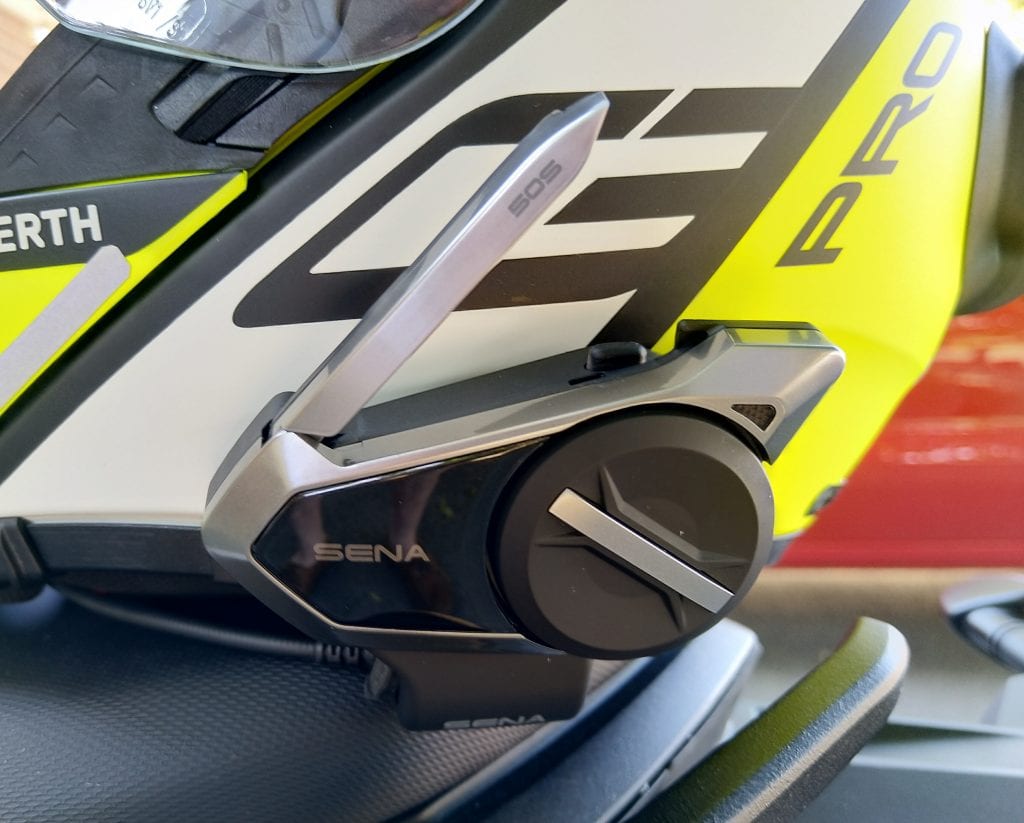
An advantage of the base is that the 50S module is removable by simply actioning the release button and sliding the module up and off. Not that the 50R unit can’t be removed as its hook-n-loop mounting pieces can be peeled apart but it’s still tethered to the helmet by the headset harness; it’s just not as convenient or stress-free as using the 50S assembly.
Sena provides three microphones with the 50S kit; the removable base boom piece along with a second separate boom microphone with mounting pieces for the helmet liner and a wired (thin wire) microphone; all three microphones utilize a 2.5mm plug for connectivity.
The redesigned HD speakers, common to both variants, are larger while providing a significant improvement regarding volume, bass, and clarity – a long overdue audio enhancement. More on the audio later.
In using the familiar base unit, the Sena 50S features the front 3.5mm auxiliary headset/earbud port and the back 2.5mm auxiliary input port, both with well-sealing silicone plugs. This compares to the simpler streamlined Sena 50R that can use the (optional) Earbud Adapter Split Cable (PN 10R-A0101) to adapt earbuds or another headset.
The battery in the Sena 50S is a bit larger, providing up to nine hours of Mesh Intercom use and 14 hours in Bluetooth Intercom mode vice the eight and 13 hours listed for the Sena 50R. Both variants utilize rapid charging, thanks in part to the newer standard provided with the USB-C interface.
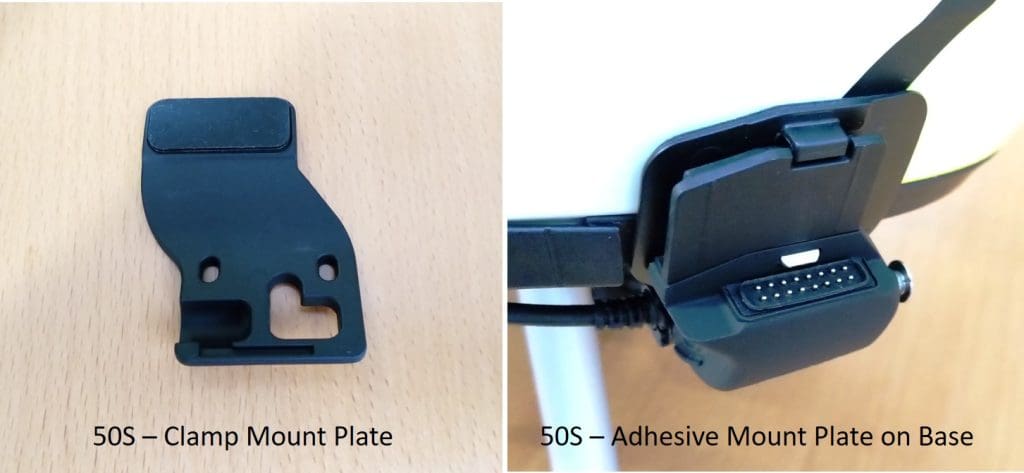
For installation and testing uniformity, another Schuberth C3 Pro, also in the Echo colourway, is the first host for the Sena 50S.
The 50S module and base is noticeably larger than the smaller lower-profile mounted 50R, but there is familiarity and comfort in the module and base combination that is compatible with the 20S and 30K modules.
And indeed, an installation shortcut for current 20S and 30K users is to simply remove their current module and fit the 50S module. But then you would not gain the benefit of the great new HD speakers with their much better audio…don’t be lazy here.
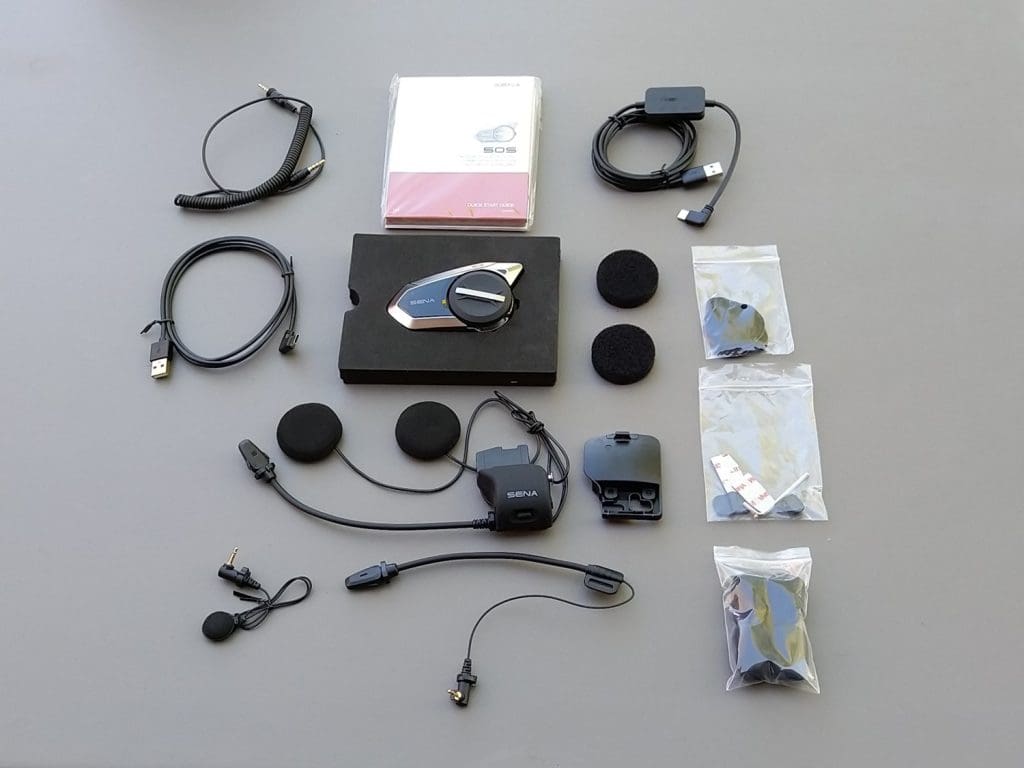
Like the other C3 Pro in Large, this one in Medium hosts many systems, most lately the 30K, with the original base mounted using the adhesive adapter plate but using replacement 3M VHB adhesive – the original sticky stuff only held for two weeks.
New system, new installation, makes sense, right? With some elbow-bending cleaning of the outer shell done in preparation, the Sena 50S base is mounted. First up – removal of the clamp adapter plate from the base. But before installing the adhesive-backed plate a small measurement and fitting task is addressed first – one that is familiar to many Sena users.
Remember the other two rubber pads in the kit? There are three – one already installed. These adhesive-backed pieces are easily removed spacers providing the ‘best-fit’ so the plastic hook tab on the top of the adapter plate fits firmly into the engagement cut-out on the upper wall of the base piece.
When the clamp mount adapter plate is used to slide up between the shell and inner liner, thee is more offset, so the thickest spacer pad works; whereas the middle thickness spacer works better when the more directly fitted adhesive mount adapter plate is used.
Long made short…peel the thick plate off and mount the middle thickness plate to the spot just vacated. Use the removed adhesive backing to cover the adhesive surface on the removed spacer. With the hook tab latch secured into the cut-out at the top, the adhesive adapter is mounted to the base with the hardware.
Position the adhesive mount/base assembly over the chosen spot making sure the bench or lip of the base sits firmly up against the lower edge of the helmet. Peel the adhesive backing away and fit the assembly directly to the helmet, pressing it on firmly, especially around the edges. Let the adhesive cure overnight.
Tip – as with other adhesive base fittings done on the Schuberth C3Pro and similar style helmets where lower shaping and edging of the shell can impact the effectiveness of the adhesive pad, a small strip of 3M VHB is placed on the bench or lip of the system base for additional grip along the bottom of the helmet. It seems to help over time.
Headset installation is easy enough with long leads facilitating routing of the right and left speakers. However, due to the hard-wire lower frame of the neck roll, there is no convenient pass-through point, so the two-wire speaker harness runs in from the outside to the interior at the lower left side of the encompassing neck roll. It shows, but it’s never been an issue in use.
The base-fitted boom microphone runs in from the lower left side and depending on where the base/module assembly sits, the microphone with sock sits centred or slightly to the left of centre – either placement works well for voice input.
Press and hold the Jog Dial and Phone Button at the same time for one second to turn the headset ON or OFF.
Jog Dial simple – rotate it backward (anti-clockwise to the rider) to increase volume and rotate it forward (clockwise to the rider) to decrease volume. The volume level set for each respective audio source is retained even when the system is rebooted.
When the 50R is OFF, press and hold the Phone Button and Jog Dial for three seconds – the alternating Red/Blue flashing sequence appears indicating pairing mode and the ‘Phone Pairing’ announcement is heard. Put your mobile device in BT pairing mode (if needed) and select Sena 50S when it appears.
When the 50S is ON, hold the Phone Button for five seconds – the alternating Red/Blue flashing sequence indicates pairing mode, and the ‘Phone Pairing’ announcement is heard. Initiate pairing per the sequence above.
Up to three other BT systems are supported by the 50S. Press and hold the Jog Dial for five seconds, the ‘Intercom Pairing’ voice announcement is heard, and a Red flashing LED is seen. If another 50S is being paired, put it into pairing mode; the devices should automatically pair, confirmed by a flashing Blue LED; the session is now live.
When pairing other Sena models, utilize the designated control, often the centre control (surface controls or Jog Wheel) to initiate BT pairing. If the two devices do not automatically pair, press the activating control on one system to complete the process; this will be confirmed by the flashing Blue LED.
A feature not found on the Sena 50S is another often-used capability, but one that a lot of users of Sena systems so equipped don’t even know is there or even know how to use it, particularly in situations where its function is so valuable.
The Ambient Mode button, by design, is not hard to find – it is raised and the only object above the flat bottom of the base.
Two quick pushes on the button (with accompanying tones) activates the mode, muting helmet audio in about 500ms so that outside ambient environment can be heard without helmet audio distractions. Another two pushes, with tones, restores helmet audio in about a second.
In riding environments where noise levels can be very high, particularly at speed or in built-up high-traffic areas, the ability to quickly mute all helmet audio and just listen is something that riders need to appreciate to maintain situational awareness; we’ve used this Sena-based feature on many occasions; it works.
This is a common feature for the Sena 50R and 50S, but with each variant having a different control layout the table below lists the features/functions of the FM Radio and identifies the specific input and timing for the 50R and 50S.
Functionally, the FM Radio feature of the Sena 50R and 50S models are extremely good…it seems to get a little better (unless imagined), with each new model and firmware tweaks have historically helped to stabilize the performance of this handy and valued feature.
When travelling and if not typically being ‘connected’ to a data source somehow, the ability to tune to travel area stations to get weather and traffic information can mean a lot. This feature has more than paid for itself during some of our trips.
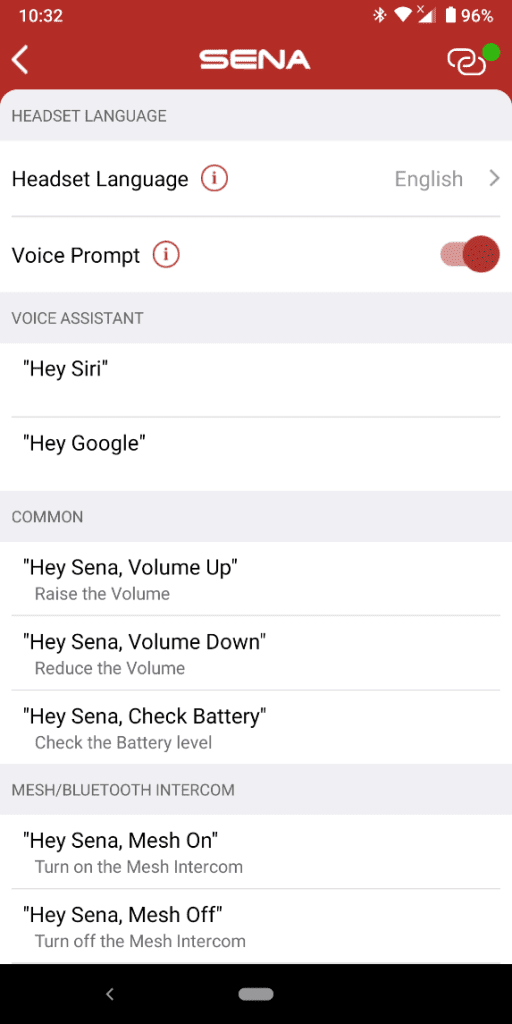
Sena identifies that both the Voice Command feature and Siri or Google digital assistant access received enhancements for the Series 50 systems, with the digital assistants now accessed directly.
The Voice Command feature is (now) available in eight languages – English, French, German, Italian, Spanish, Chinese, Japanese, and Russian. This feature provides the means to activate or call-up listed operations through voice input; a hands-free activity.
More information regarding the use of and the complete listing of Voice Commands is found in Section 10 of the Sena 50R Guide and Section 11 of the Sena 50S Guide. The voice command list, by language, is also available on the Sena 50 Utility App (>> Device Settings, >>Headset Language).
The Sena Voice Command library is well defined and quite complete with virtually all common, Mesh/Bluetooth intercom, phone, music, and FM radio commands. In acknowledging Sena’s stated caveat about voice command performance this voice input-driven feature, unlike the excellent intercom capability, is very susceptible to surrounding and cockpit/helmet noise.
Unfortunately, function and performance-wise, the jury has been out for years regarding my experience with Sena’s Voice Command feature and the jury is still out regarding more recent testing with the 50R and 50S.
To me, it is quirky; and even when activated it seems to work for one or two commands then it disappears, usually until the system is rebooted. I can only hope that other users have a better experience and if so, is all good. Compared to the same feature found in the closest competitor’s systems, the Sena Voice Command needs (more) work.
On a far more positive note, if either the Google (Android) or Siri (iOS) feature is installed on the paired smartphone or device, speaking a loud wake word, like ‘Hey Google’ or ‘Hey Siri’ into the microphone results in the respective digital assistant waking up and responding, typically 8 times out of 10.
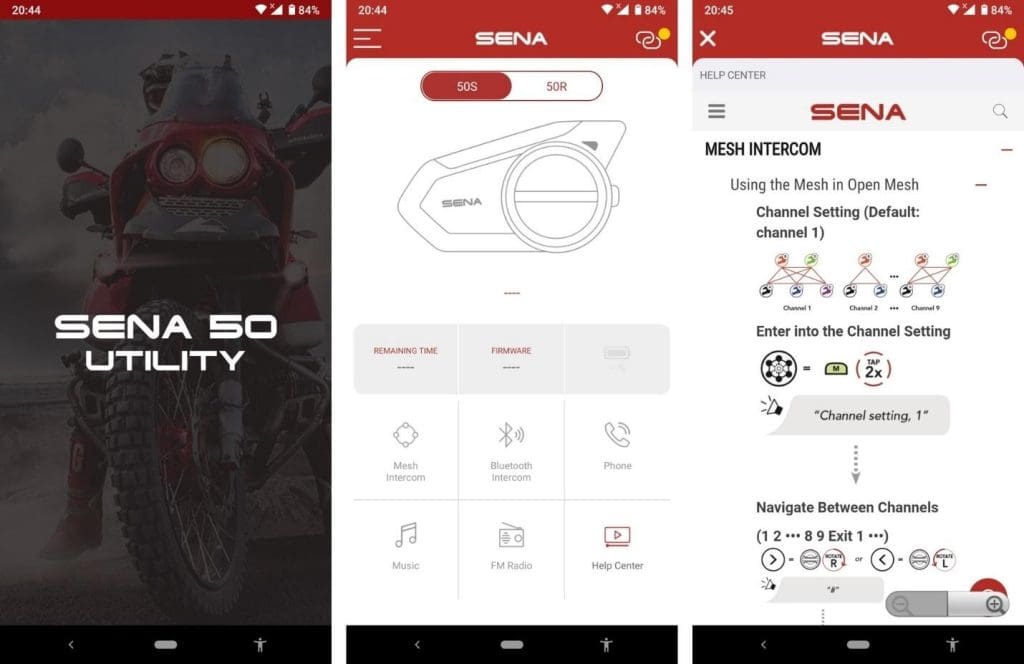
Sena’s App library undergoes constant evolution with updated or new system-specific Apps released with a more collective or broad-based approach regarding overall functionality rather than separate apps for specific function sets. This is by no means a bad thing and it is something Sena is known for, like their comprehensive ongoing firmware support.
As such, we have the Sena 50 Utility App, a gathering of everything Sena 50 related, in one quite well laid out and easy to use App available for iOS and Android. General features include Mesh and Bluetooth Intercoms, Phone, Music, FM Radio and overall system management, WiFi Adapter use, Application settings and, Help (Support, Forum, Help Centre, Quick Start, and User Guide).
Using the direct input controls or the Sena Device Manager does provide alternative means to configure and manage the Series 50 systems, but so far, the Sena 50 Utility App is proving to be the best way – it’s an absolute gem.
With real breadth and depth and no attempt is made here to cover App content in detail – that would take another submission itself, so only three features are discussed below.
Provides the ability to view and interactively manage both Mesh and BT Intercom capabilities, including turning Mesh on/off, create Mesh Grouping or Reset Mesh, retune the Open Mesh Channel, view and setup BT Group from listed users, Share Music, etc.
Allows users to increase/decrease the decibel level of different frequency ranges of audio: Balance setting adjusts all ranges to the same volume level (0dB); Bass Boost increases bass range (20-250Hz); Mid-Boost increases mid range (250Hz – 4kHz); and, Treble Boost increases high range (4kHz – 20kHz). This feature, along with the superb new Sena HD speakers provide an outstanding audio environment.
As part of the ‘utility’ approach, Sena wisely bundled this feature into the app; under Setup, it allows the user to connect and configure the very useful WiFi Adapter harness, making charging and firmware updates even easier than they were.
If you have not yet updated any other Sena Mesh compatible devices to their latest firmware release that provides the Mesh 2.0 compatibilities, what the heck are you waiting for?
The 30K, Momentum EVO and the +Mesh products are all easily upgradeable using the Sena Device Manager that is downloaded and installed on your desktop or notebook or other compatible devices, the Sena WiFi Docking Station or, the Sena WiFi Adapter that is included with the 50 Series and Momentum EVO helmet products.
Remember how I keep harping that it really (really) pays to keep your systems updated…well, this is the no-brainer example of why. No matter whether you use Mesh intercom, Bluetooth intercom, or a combination of both, upgrading to the latest firmware built for the respective devices provides unequaled community compatibility.
It’s almost like the best is left for last…well, yes. With the Series 50 systems turned on and in standby mode, deploy the Mesh Antenna (push out for the 50S and push in for the 50R) and push the Mesh Intercom Button or MIB on each (behind the antenna for 50S or the back of the antenna for the 50R; trust me, it’s worth it.
A walkthrough, with Voice Announcements (identified by in single quote):
Setting Mesh 2.0 compatible systems to any one of the nine (1 – 9) Open Mesh works extremely well using both 50 Series systems and two 30K systems on hand now updated to Mesh 2.0 compatible firmware version 3.0.1. Two other Sena 50R systems were added to the mix for one testing excursion.
The Open Mesh channels need to be set individually by the users, although actioning this using the MIB and Jog Wheel or the Mesh management screen on the App, is simple and reliable. Perhaps down the road we will see more complex common channel or group management features?
The last used Mesh Channel is retained in memory whether Mesh is exited and/or the system is turned off.
In using Mesh 2.0 with multiple users although not with multiple groups yet, what seems to be missing is a quick way or shortcut to return to Channel 1; a specific control input sequence would be very good here (control input or voice).
Right now, getting back to Channel 1 requires users to manually tune back to the channel or, if the Sena 50 Utility App is readily accessed, by activating the Mesh Reset button on the Mesh screen.
Despite the length of this submission, we haven’t covered everything about the new Sena 50 Series systems…but when/if group activities and travel become (more) viable, you can rest assured that more user and performance data awaits gathering; with an update to this review provided in some form.
In the meantime, with a fair amount of static and ride testing over the last two months or so while appreciating ongoing COVID-19 limitations, virtually all the features of the 50R and 50S systems have been evaluated, along with input from four other users as well.
All to say that the performance span of the Sena 50R and 50S during this review period with on and off-road forays was excellent to outstanding. The Series 50 systems are a big jump forward in terms of form, function, performance, and reliability. Other than one Mesh feature, everything else tested statically and on the road works, as advertised.
The only feature not yet validated is Group Mesh…for some reason, neither the input sequence or the App Mesh Intercom controls result in Group Mesh creation; is this a firmware issue or user issue? We will find out.
Using Mesh 2.0 is an even more positive experience than it was with the original version, with better range, no loss of signal, clear concise audio and absolutely no noise. Average link distances with 2 to 3 riders of 1.0 to 1.4km (0.6 to 0.8mi) isn’t an issue over relatively flat uncluttered terrain.
In the twisties or up/down hills, individual link distances can drop off slightly, but Mesh 2.0’s much improved multi-path/best-path approach mitigates many issues experienced with Mesh 1.0. Mesh 2.0 is just plain better.
Bluetooth intercom is much improved with almost non-existent noise and far less interference overall. As often observed, rider to rider ranges are as good and often better than with Mesh; one road ride had a gap of close to 2.0km between riders without significant signal or audio degradation.
The new audio experience for Sena systems is finally here. And even when factoring in the audio-related factors we experience while riding, the new HD speakers are outstanding. The additional audio tweaking provided by the Audio Equalizer settings under the Sena 50 Utility App is icing on the cake; tuning a helmet audio environment is seldom a bad thing.
The audio experience is sustainable as well, with excellent battery performance seen so far. In running the systems over a full day of riding with some media streaming, the 50R showed 50% and the 50S was indicating 75%. The use times identified by Sena for the respective systems seem to be good although long term use will provide more data.
Two good late spring wet rides did not create issues regarding condition or performance of the systems, nor did the usual water hose exposure test. Over the years in using many Sena systems only one ever succumbed to moisture (it was replaced by Sena). But it would be nice to see Sena pursue and provide a waterproof rating for their systems.
And finally, with the arrival of the Sena low profile small footprint 50R and the more traditional classic styled 50S, Sena offers more choice (and performance) than ever regarding size, shape, feature and fitment over their diverse product line; where the large base of the 20S/30K and 50S can be an issue, the size and mounting options for the 50R shouldn’t be.
The Sena Series 50 products are impressive. The 50S is more classic in look while the 50R breaks a bit of new, but welcome ground. Both variants are nicely formed, solid feeling and clean look thanks to glass-like black inserts and burnished-finish housings.
Neither are lacking regarding build, function and performance and going forward, the systems will only get better, thanks to Sena’s continuing value-added system updates. I am really looking forward to doing a feature by feature assessment with the competition.
In another expected and most positive move, the seriously serious HD speaker kits included with the Sena 50 Series systems will be offered for the 10C Pro, 10C EVO, 20S, 20S EVO and 30K later this summer (possibly by August).
Once the HD speaker kits are released, Sena will roll out firmware upgrades for each of the identified systems so users get the optimal HD listening experience possible. Pricing is expected to be around $39.00 USD.
The deadline for the US-only Sena Trade-Up Rebate Program of 30 June has come and gone but Sena is encouraging customers who purchased a 50R or 50S from www.buysena.com up to 30 June to submit a Rebate Request Form. 30K owners can claim a 150.00 rebate while 20S and 20S EVO devices qualify for 135.00 rebates.
And to repeat – if you have not yet updated any other Sena Mesh compatible devices to their latest firmware release that provides the Mesh 2.0 compatibilities, what the heck are you waiting for?
Buy Now

The Bottom Line – the Sena Series 50 products are more evolutionary than revolutionary; but they are still everything hoped for. Other than a weak Voice Command feature and a Mesh-related firmware hiccup (or finger problem) to resolve, life with the 50R and 50S systems is good; they work as or better than advertised and that ain’t a bad thing. Sena once again keeps expanding their Mesh community and pushing the functional yardsticks out. We benefit, albeit with some investment. This investment is worth it. Highly recommended product.
Pros
wBW Specs:
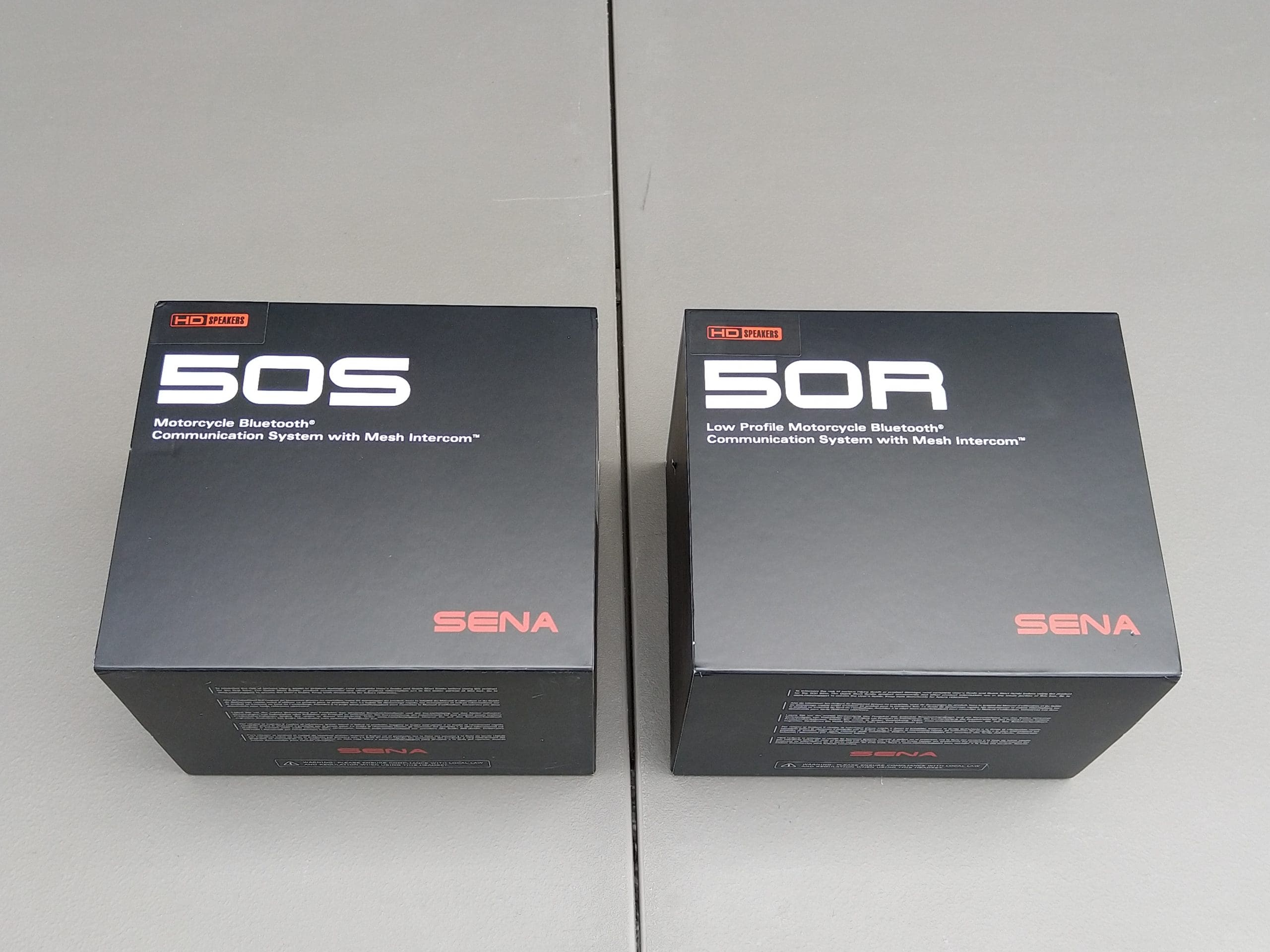
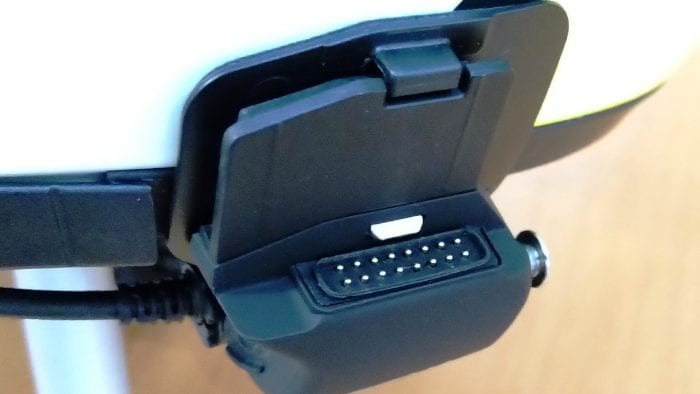
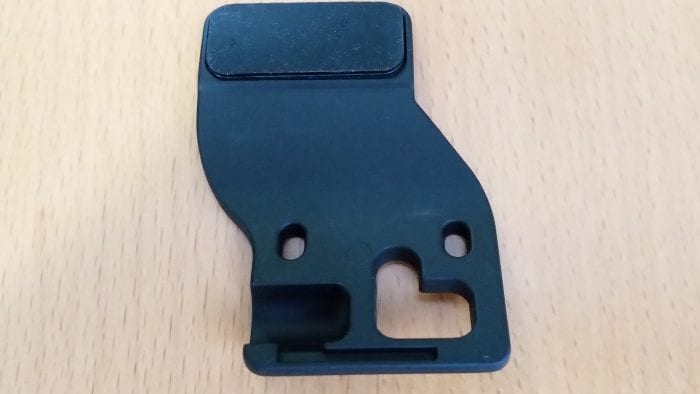
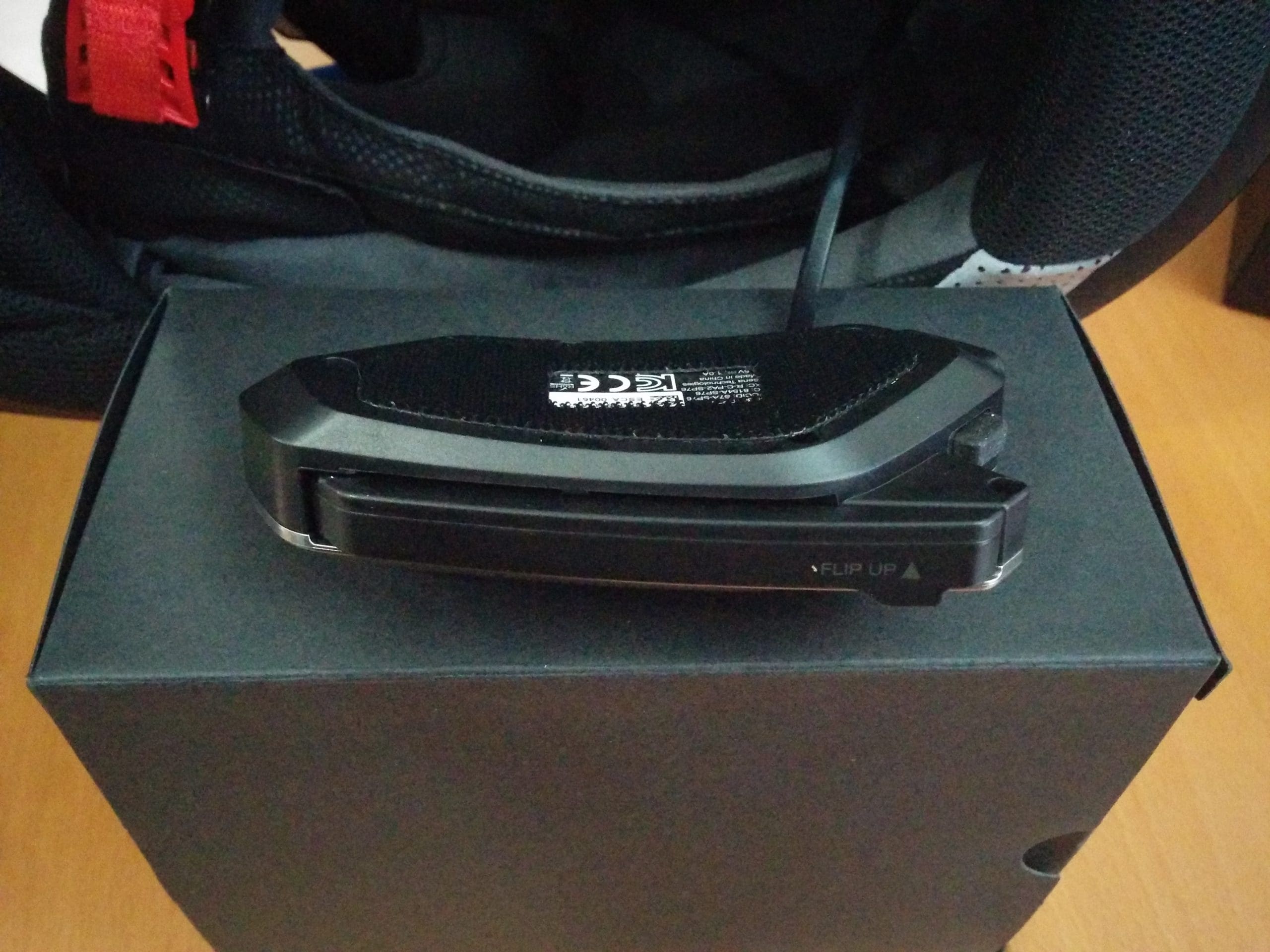
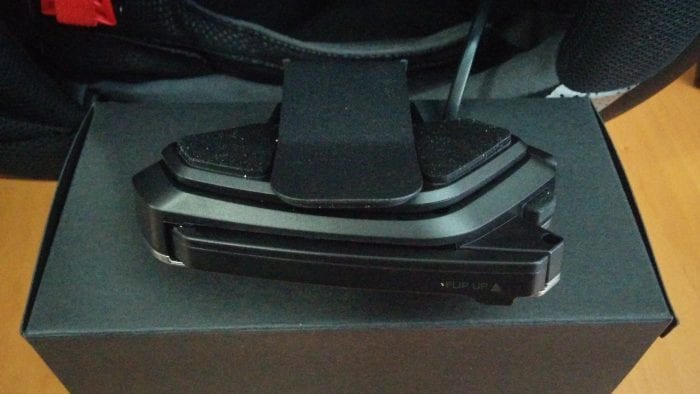
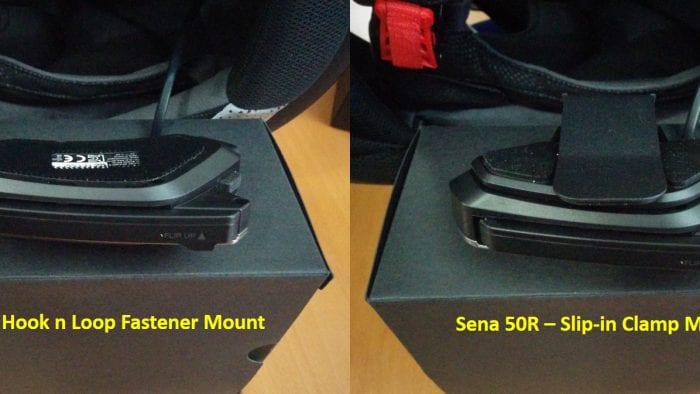
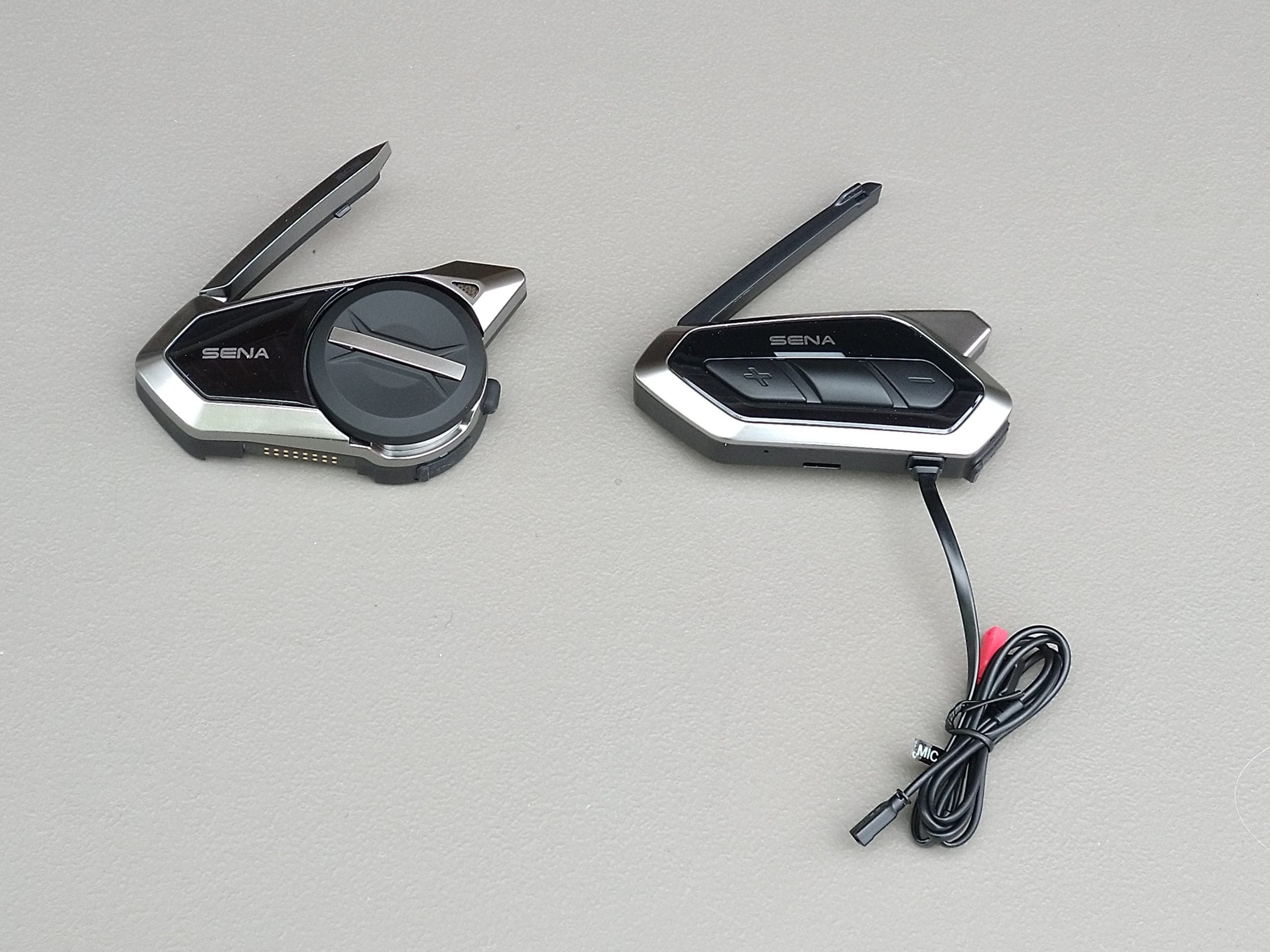
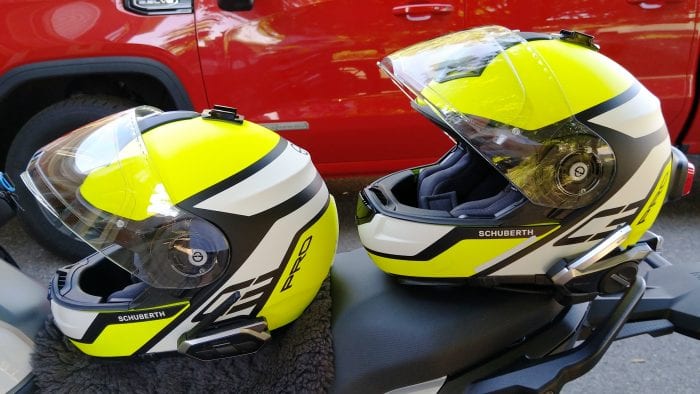
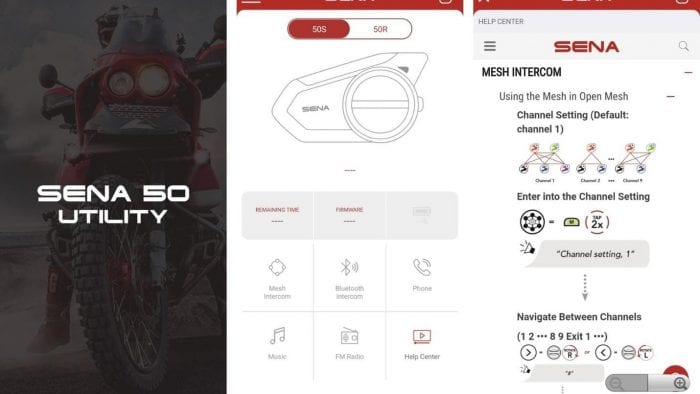
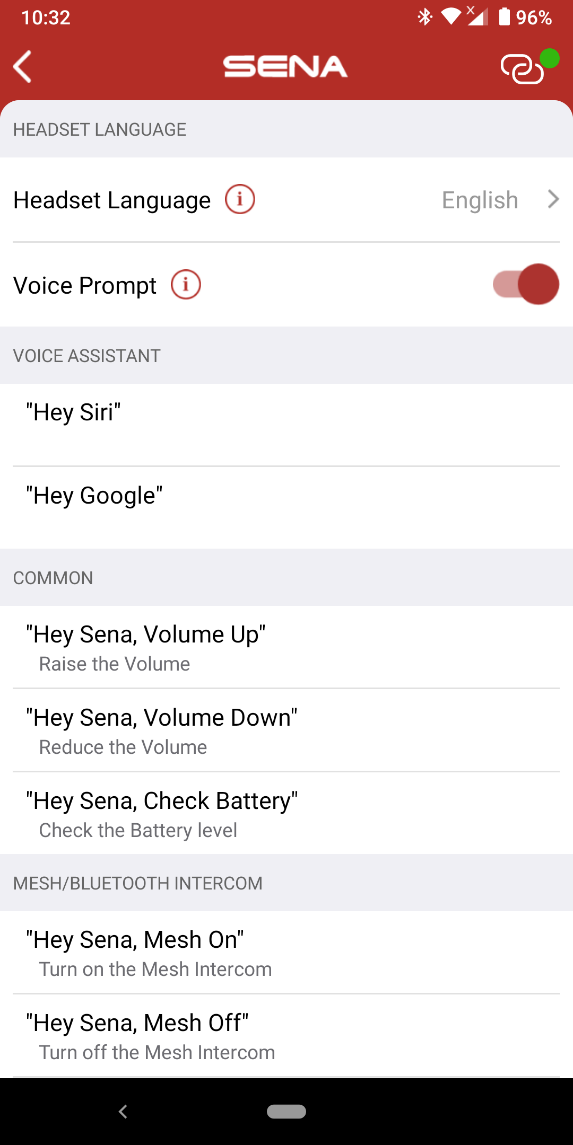
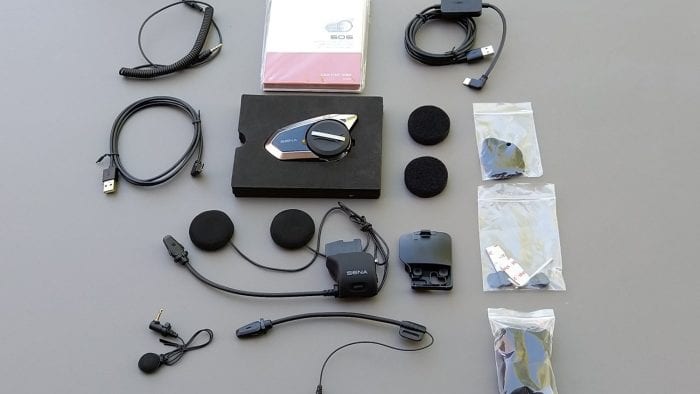
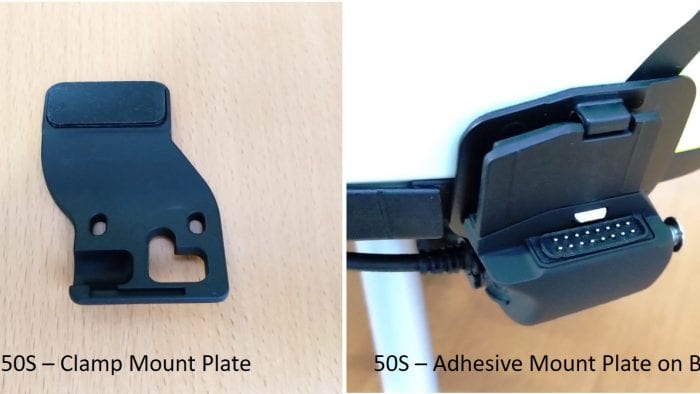
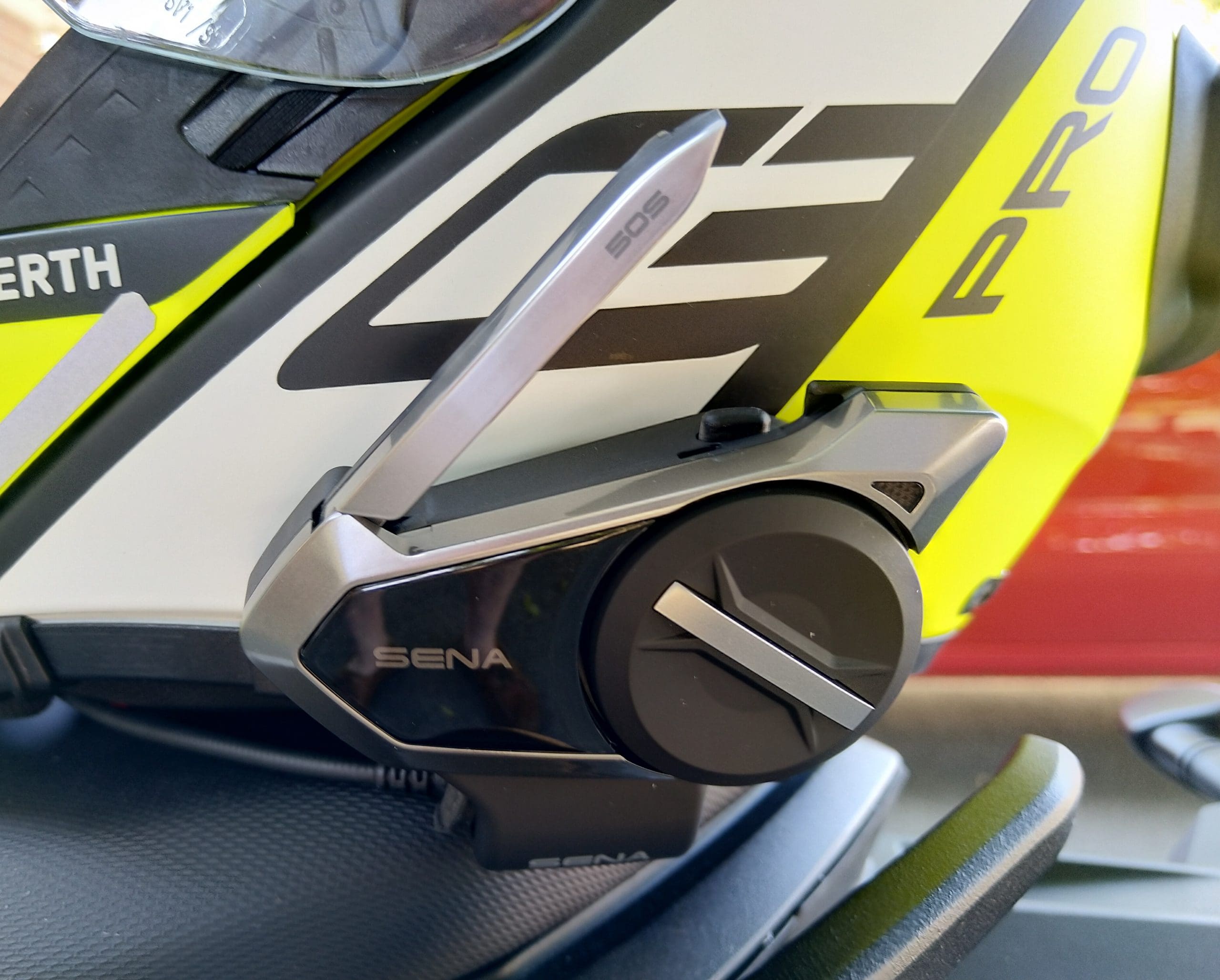
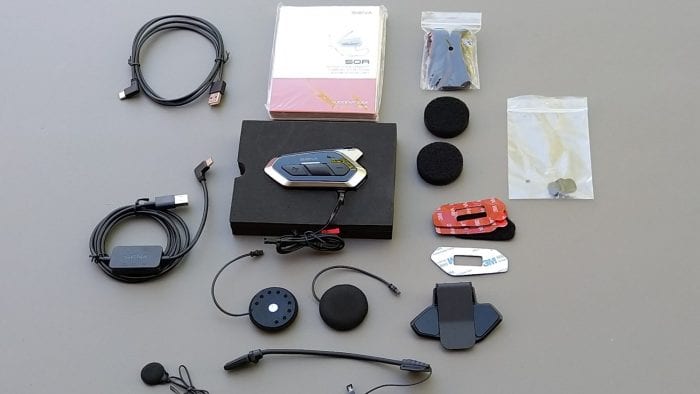
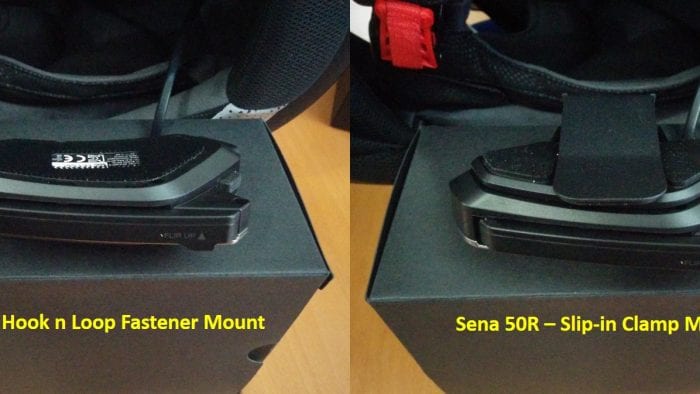
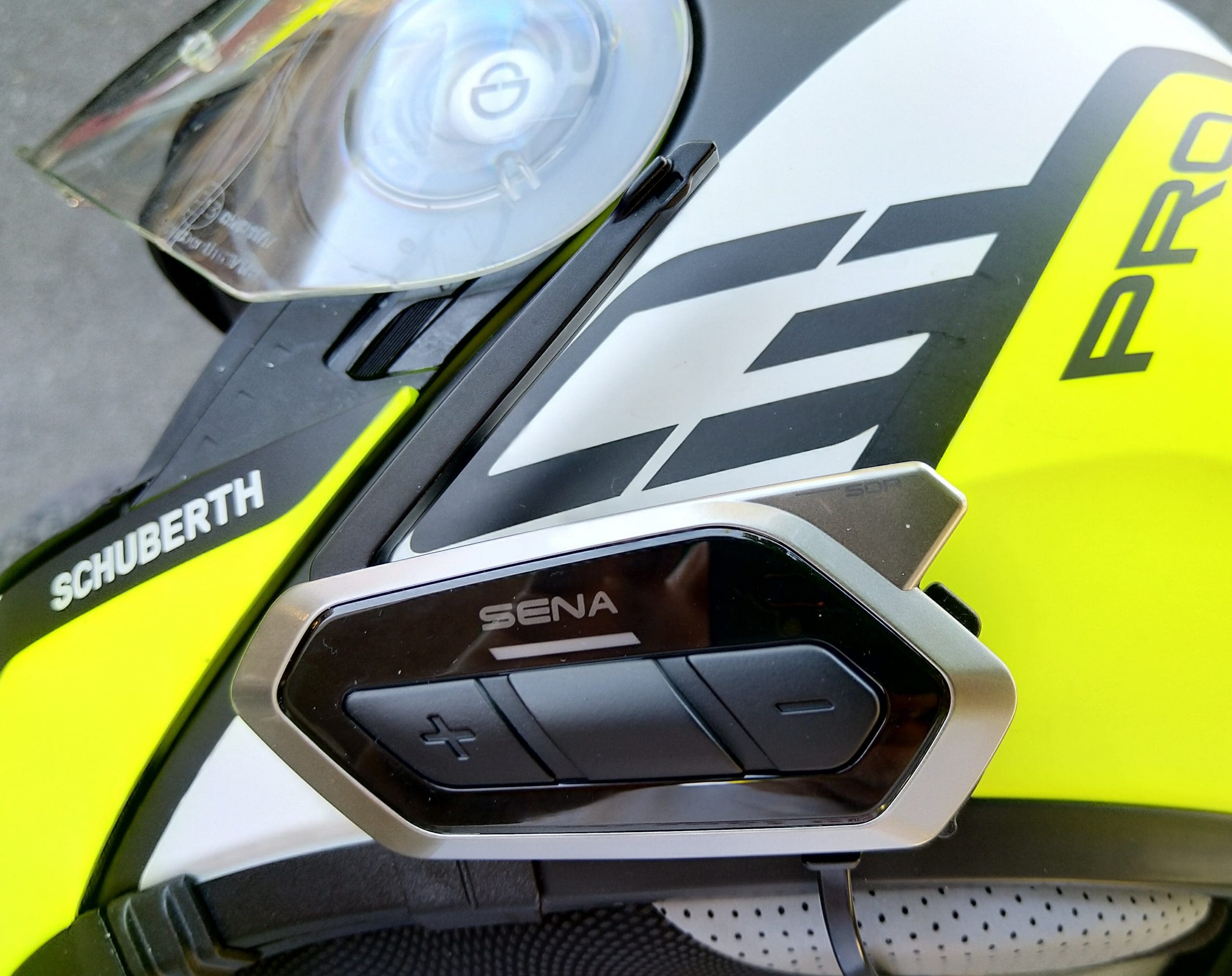
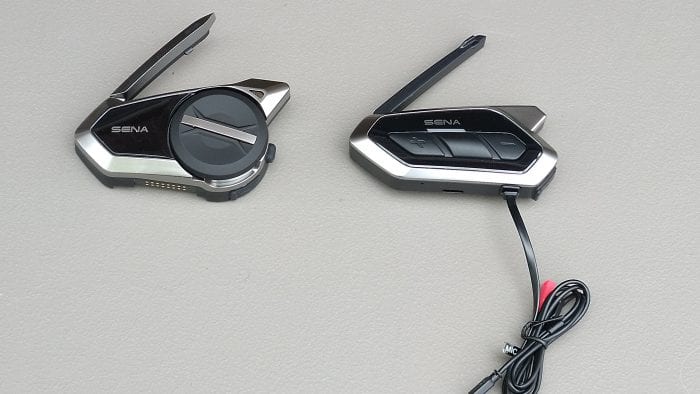
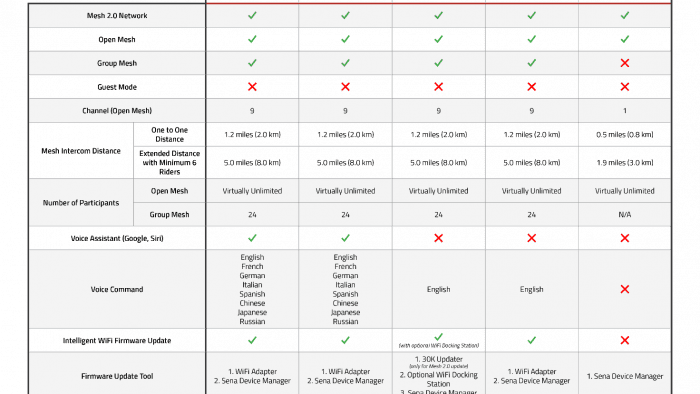

The post SENA 50R & 50S [In-Depth Review] appeared first on webBikeWorld.
Continue reading...

wBW partners with RevZilla to keep our lights on. We may receive a commission if you purchase via our links below. Thank you for supporting us.
Sena 50S @ RevZilla Sena 50R @ RevZilla
Sena 50S @ RevZilla Sena 50R @ RevZilla
Introduction
In retrospect, I guess the title for this review should have been used for Sena Momentum EVO posting, but it fits here just as well.
Sena continues moving forward with some speed, what I call a ‘bit of a tear’, evidenced by the release of these Series 50 systems – the 50R and 50S with Mesh 2.0 features, and following close behind, new firmware releases for the 30K, Momentum EVO and +Mesh products bringing them into the Mesh 2.0 realm.
And for other outdoor activities, the Sena R1 EVO cycling helmet with taillight, along with the industrial oriented Tufftalk M, are now upgradeable to Mesh 2.0 specifications.
Although an arguable point, the new 50 Series systems aren’t so much revolutionary as they are evolutionary – most noticeable with the sleek low-profile Sena 50R. Along with the more standard or classic Sena 50S, current users and consumers have two feature-rich systems with outstanding communication technology from one of the leading industry players.
Sena Series 50 with Mesh 2.0 Overview
Over this last winter and into early spring there were lots of rumours and information snippets regarding the next new wireless helmet system from Sena and it (really) wasn’t a big secret that the next system would/could/should sport an upgrade to the original Mesh feature.
Thankfully, it all turned out to be true and mid-April saw the official announcement regarding the Bluetooth 5 based flagship 50 Series systems: the 50R and the 50S that did indeed feature Mesh 2.0 Technology.
And within another two weeks, Sena added two more enticements regarding the 50 Series release. The first announced the pending release of firmware updates to bring all current Mesh products up to the Mesh 2.0 baseline while the second identified a limited time 50R and 50S trade-up program for existing Sena 30K users but limited to US customers only – bummer.
Sure enough, with May-Day here and in connecting the Sena Momentum EVO helmet to its WiFi Adapter, the WiFi sync and charging LEDs came on as expected and, about two minutes later the middle (Firmware) LED indicated there was an update waiting.
I disconnected the helmet and proceeded to manually work through this eagerly anticipated update; five minutes later the EVO was communicating via Mesh 2.0 to both the Series 50 systems; a good confidence-building introduction to Mesh 2.0.
Not that I had a lot of concerns over Mesh 2.0 functionality. Well before the Sena 50 Series systems were released globally, Sena teamed up with BMW Motorrad for the International GS Trophy 2020 Event held 9 to 16 February 2020 in New Zealand where 140 top ADV riders from over 40 different countries formed 23 teams for this truly global event.
In what could be classed as both a bold venture and a pre-emptive marketing bid, Sena provided 100+ 50R systems, along with Sena SR10 pieces to provide Sat Phone connectivity for the event Marshals. The whole activity, and venture, was a resounding success for the event, teams, individuals, and Sena.
This is how you test, validate, and promote a product in real-time. This video testimonial is a good one to watch, as is this blog posting.

Sena Mesh 2.0 Defined
Sena claims that significant algorithm improvements provided by an ingenious method of confirming the receipt of data sent between Mesh 2.0 networked devices provide an increase of 80% more data packets within the network for a dramatic increase in overall intercom performance and inherent stability realized.
Essentially, each Mesh 2.0 connected device shares information, so each device is ‘aware’ of every other device (situational awareness personified) providing an adaptive and autonomous communication network based on Optimized Smart Routing Management.
This management approach has two key precepts: this ‘awareness’ between all devices allows Mesh 2.0 to select the optimal data path (minimal obstructions) to deliver messages; and relatedly, connected devices are constantly ‘polled’ to dynamically determine their presence and based on this information the best pathway for transmission is chosen.
Implementation of Mesh 2.0 also resulted in enhancements to and refreshment of the original Mesh modes. Mesh 2.0 Open Mesh Intercom now includes a multi-channel function allowing users to communicate across nine (9) discrete channels with a virtually unlimited number of ‘connected’ users in each channel. Note – the +Mesh operates with one primary channel only.
This new multi-channel feature addresses an issue that arises when other riders or rider groups are working in Open Mesh on the (default) channel 1 or primary channel, in that your group can now move to another channel in Open Mesh for secure communications without other user interference.
Within the same channel in Open Mesh or private groups in Group Mesh, six (6) users can talk at the same time. And the Group Mesh Intercom Mode now supports up to 24 participants (users) in a private communication group, although the six at a time talking rule still applies.
Sena states that the Mesh 2.0 features and capabilities provide a more robust and reliable communication system, with audio intercom clarity and sound quality significantly boosted thanks to optimal path planning that provides better reach resulting in fewer dropped messages (communications) due to obstacles and interferences.
Sena Mesh 2.0 Functions, General Features and Compatibility
The table below from the Sena website provides a very good compilation of the features, functions, and compatibility points of Sena Mesh and now Sena Mesh 2.0 capable systems.


Common Features of the Sena Series 50 Systems
The smaller-framed lower-profile Sena 50 and the larger 50S with an updated version of the tried and true Jog Wheel are indeed visually different with distinct features and different mounting and headset component approaches.
Common Feature Listing (compilation) of the Sena 50R (sleek one) and 50S (Jog Dial one):
- Cutting edge technology, communications reliability, and audio clarity with Mesh 2.0
- Bluetooth 5.0 for greater efficiency and effectiveness, battery performance, and evolution
- Redesigned HD speakers with a marked increase in volume, bass, and clarity
- Headset pairs with multiple BT devices – mobile phone or other smart device, navigation devices, MP3 players, Sena SR10 two-way radio adapter, or other devices using the Mobile Phone Pairing, Second Mobile Phone Pairing or GPS Pairing procedures
- Advanced Selective Pairing allows the headsets to establish two BT profiles – Hands-Free or A2DP Stereo so the headset can connect and manage audio from both devices
- FM Radio with RDS
- An enhanced Voice Command feature
- Upgraded voice-activated digital assistant access – ‘Hey Google’, ‘Hey Siri’
- Mesh Intercom (deployable) Antenna (50R – push in, 50S – push out to release)
- Separate Mesh Intercom Button (MIB) – behind/below antenna
- Pair with up to three other Sena Headsets for Bluetooth Intercom
- Universal Pairing Mode provides intercom connectivity with other brand systems
- Internal Bluetooth Antenna (fin shape on back)
- Visual battery status routine – after initial boot-up LED flashes, a Red LED flashes four, three or two times correlating to High, Medium, or Low battery status. While in use, if the battery status is low, the ‘Low Battery’ voice announcement is heard
- Improved battery performance and Rapid Charging with USB-C interface), feature provides 3.5hrs Mesh or 6hrs BT Intercom after only 20min of charging
The Sena 50R – Breakdown

The Sena 50R is indeed distinctive compared to the more traditional shape and fitment of the larger classic or ‘standard’ 50S variant. Between its smaller sleeker frame and low-profile mounting option, there is a big difference in helmet footprint between the two 50 Series products.
A discrete and nicely shaped three button interface layout contributes the smooth look and flowing lines of the 50R, with the distinctly shaped front (+), centre and back (-) buttons matching the curve of the module and the face edge shaping.
Both variants are nicely finished with their glass-look black inserts and burnished finish of the housing, although between form and finish, the 50R makes the best first impression.
In keeping with its ‘R’ designation also used for the diminutive Sena 10R model, the Sena 50R utilizes a more direct close-fitting approach with two mounting options. One uses hook-n-loop pieces that put the module about 2mm away from the helmet shell; the second option is a thin slip-in piece (good for full-face helmets) that also keeps the module close to the helmet shell.
Two microphones are included with the Sena 50R kit – a wired boom and wired (thin wire) microphone, both using modular mini connectors.
The redesigned HD speakers, common to both variants, are a significant audio step-up regarding volume, bass, and clarity and, long overdue.
Other than the USB-C charging/data port, there are no external ports on the Sena 50R as found on the Sena 50S system that retains the 3.5mm auxiliary headset/earbud jack and the rear 2.5mm auxiliary input jack on the front and back of the base.
The 50R can support third-party earbuds or speakers in using the (optional) Earbud Adapter Split Cable (PN 10R-A0101) now listed for both the modular 10R and the 50R. This small adapter cable interfaces with the left & right modular speaker leads from the Sena 50R module terminating in a 3.5mm stereo jack to connect earbuds or other headset speaker sets.
The battery in the Sena 50R is smaller than the one used in the Sena 50S. The 50R battery rated at 8 and 13 hours (Mesh and Bluetooth Intercom use respectively) as opposed to the 9 and 14 hours for the Sena 50S. Both variants utilize rapid charging, thanks in part to the newer standard provided with the USB-C interface.
Sena 50R Specifications
- Mesh 2.0 – robust and reliable
- One-Click-to-Connect simplicity
- Mesh Intercom – superior audio quality
- Multi-channel protocol in Open Mesh Intercom allows users to switch between nine communication channels
- Bluetooth 5.0 enabled
- Redesigned HD speakers optimized for volume, bass and clarity performance boosts
- Voice-activated digital assistant access (‘Hey Google’, ‘Hey Siri’)
- 30% faster rapid charging with USB-C interface
- Included Wi-Fi Adapter harness – charges and updates firmware automatically
- Elegant glove-friendly three-button interface
- Voice Commands recognized across eight languages
- Bluetooth Intercom – four users
- Open Mesh Intercom – virtually limitless
- Group Mesh Intercom – 24 riders
- Ambient Mode Button

Sena 50R – Helmet Installation
First up for helmet installation on to the Schuberth C3Pro (Echo colourway) is the Sena 50R, the low profile – smaller, slimmer and (lighter) weight member of the Sena Series 50 family.
It has more headset modularity (to a degree) and utilizes three vertical button controls along with the MESH activation button on the back sloped section, rather than Sena’s trademark Jog Dial/Wheel, Phone Button and top back Mesh button layout found on the Sena 50S and of course, the 30K edition.
Sena 50R Retail Box Contents

- 1 x Sena 50R Headset Module with integrated headset harness
- 1 x metal (slip-in) clamp mount
- 1 x wired boom microphone
- 1 x wired (thin wire or lead) microphone
- 1 x set of Sena HD speakers with individual keyed micro-connectors and hook half of hook-n-loop pads preinstalled
- 1 x set of hook-n-loop pads for module to mount fitment
- 2 x double-side adhesive backed pads for module fitment
- 1 x set of shaped loop fastener pads (rounds) for speaker fitment
- 1 x set of hook-n-loop speaker placement pads (1 cm thick)
- 1 x plastic hook-side holder for boom microphone mounting
- 2 x oblong shaped loop fastener pads for boom microphone holder
- 1 x shaped loop fastener pad for thin wire/lead microphone
- 2 x microphone sponges (socks)
- 1 x USB-C power & data cable
- 1 x USB-C Sena WiFi Adapter
Sena 50R Initial Installation
The favoured Schuberth C3 Pro is the first host for the Sena 50R system. After undoing the bottom front side snaps and separating the left and right liners from the inner shell wall (3 snap-in fasteners), the existing 30K headset is removed.
Once the base with boom microphone is separated from the helmet, the existing 3M Dual Lock sections mounted on the helmet and system base (my universal quick use solution) are also warmed up slightly (low heat setting on heat gun) and taken off and the mounting area cleaned.
Hook-n-Loop Option
These pieces provide the simplest and closest fitting mounting option for the sleek Sena 50R. After peeling off the cover of the adhesive-backed loop (brush) piece, it is laid in place on to the helmet shell and pressed down firmly.
The adhesive-backed hook section (with centre cut-out) is prepped and laid into place on the shaped slightly recessed area on the back of the 50R module. Make sure both adhesive pieces are pressed into place and always work around the edges as well. They should be left to cure for a few hours or overnight if patience permits.
Double-Sided Adhesive Option
Using these pieces is more permanent, although it does provide a bit more security (or should) – just remember the 50R can’t be easily removed from this mounting.
Take the double-sided adhesive piece (with cut-out), peel the backing off the module side first and lay the piece into place. Now peel the outer backing off and stick the adhesive piece directly to the helmet shell in the desired spot, just slightly behind the sun visor slider frame. Avoid touching the adhesive if possible and an overnight or 24hr curing period is good.
Clamp/Slide-In Option
This new piece provides an expedient option when a mounting bracket can be slide in between the outer and inner shell layers as possible with many full face and some three-quarter style helmets. One of the shaped double-sided adhesive pieces is used here to secure the 50R module to the bracket.
The bottom of the 50R has a small recess on the lower helmet-side of the housing and there is a matching tab on the slide-in bracket. Before peeling the outer backing off the adhesive pad make sure the bracket tab is engaged in the 50R recess. Now peel the backing off the pad, align and press the pieces together firmly to accelerate the bonding.
After a suitable curing period, the clamp bracket with module mounted is positioned at the desired point along the left lower shell and the slide-in section slipped between the outer shell and inner liner. Make sure this can be easily and safely without damage to the helmet.
In looking ahead to the next installation on one of the full face helmets, the clamp/slide-in bracket is usable, but rather than using one of the double-sided adhesive pieces, a shaped piece of compatible adhesive backed ‘loop’ will be cut and mounted to the bracket so the existing hook pad backing on the 50R module does not have to be changed.
This will provide mounting flexibility between helmets, especially once a second 50R modular headset is procured. So, Sena – how about an extra set of module hook-n-loop pads in the kit?
The headset harness from the 50R is routed in along the back lower left of the encompassing neckroll – the hard-wire lower frame of the neck roll piece seals the bottom of the helmet preventing pass-through, so the harness comes in under the back left of the neckroll, an approach that has never been an issue in using the helmets.
With the cheek pads separated from the inner liner, the individual speakers are disconnected from their modular connectors and mounted in the desired position in the elongated speaker recesses – a great design feature truly facilitating accurate speaker placement for users.
Once the speakers in place, the long right harness lead is routed around the back edge under the headliner section, then both leads are connected to their speakers and tucked up inside the lower edge of the cheek pad on the left side.
The separate boom microphone is mounted along the lower left inner side of the liner utilizing previously installed loop sections and the hook-side microphone holder from the kit. The boom can be repositioned depending on desired placement of the foam-covered microphone.
Sena 50R – Initial Device & Intercom Pairings
Power ON/Power OFF
Press the Centre and (+) Buttons at the same time for one second to turn the system ON or OFF.
Volume Control
System volume is controlled by pressing the Volume Up (+) button or the Volume Down (-) button for volume Down. Volume level of each audio source is set and maintained independently by the user (manually or using the App); the settings are retained even when the system is turned rebooted.
Device Pairing
When the 50R is OFF, press and hold the Centre Button and (+) for three seconds, the alternating Red/Blue flashing sequence appears indicating pairing mode. Put your mobile device in BT pairing mode (if needed) and select Sena 50R when it appears.
When the 50R is ON, hold the centre button for ten seconds, ‘Configuration Menu’ is heard, now push the ‘+’ button once, ‘Phone Pairing’ is heard. Initiate pairing per the sequence above.
Bluetooth Intercom Pairing
Up to three other BT systems are supported by the 50R. Press and hold the Centre Button for five seconds, the ‘Intercom Pairing’ voice announcement is heard, and a Red flashing LED is seen. If another 50R is being paired, put it into pairing mode; the devices should automatically pair, confirmed by a flashing Blue LED; the session is now live.
When pairing other Sena models, utilize the designated control, often the centre control (surface controls or Jog Wheel) to initiate BT pairing. If the two devices do not automatically pair, press the activating control once to complete the process; this will be confirmed by the flashing Blue LED.
The Sena 50S – Breakdown
Sena 50S – Overview
The Sena 50S (think ‘S’ for standard) variant with its larger chassis and higher profile frame and classic Jog Dial is obviously based on the 20S and 30K in basic look, feel and fit…but there are styling and functional differences.
The lower profile three-button arrangement of the Sena 50R is easy to use but it is often not as ‘glove-friendly’ as the Jog-Dial based Sena 50S is, especially when medium to heavy weight gloves are worn. Keeping this more standard version is a smart approach for lots of reasons.
The Sena 50S uses the larger robust weather resistant base found with the Sena 20S and 30K models as well. Both the heavier clamp and lighter adhesive back plates are provided and it’s a simple matter to remove two lower screws and disengage the top fit-in pieces when determining which of the two mounting approaches are better for the helmet.

An advantage of the base is that the 50S module is removable by simply actioning the release button and sliding the module up and off. Not that the 50R unit can’t be removed as its hook-n-loop mounting pieces can be peeled apart but it’s still tethered to the helmet by the headset harness; it’s just not as convenient or stress-free as using the 50S assembly.
Sena provides three microphones with the 50S kit; the removable base boom piece along with a second separate boom microphone with mounting pieces for the helmet liner and a wired (thin wire) microphone; all three microphones utilize a 2.5mm plug for connectivity.
The redesigned HD speakers, common to both variants, are larger while providing a significant improvement regarding volume, bass, and clarity – a long overdue audio enhancement. More on the audio later.
In using the familiar base unit, the Sena 50S features the front 3.5mm auxiliary headset/earbud port and the back 2.5mm auxiliary input port, both with well-sealing silicone plugs. This compares to the simpler streamlined Sena 50R that can use the (optional) Earbud Adapter Split Cable (PN 10R-A0101) to adapt earbuds or another headset.
The battery in the Sena 50S is a bit larger, providing up to nine hours of Mesh Intercom use and 14 hours in Bluetooth Intercom mode vice the eight and 13 hours listed for the Sena 50R. Both variants utilize rapid charging, thanks in part to the newer standard provided with the USB-C interface.
Sena 50S Specifications (Listed)
- Mesh 2.0 – robust and reliable
- One-Click-to-Connect Mesh Intercom -with superior audio quality
- Bluetooth 5.0 enabled
- Redesigned HD speakers optimized for performance boosts regarding volume, bass and clarity
- Voice-activated digital assistant access (‘Hey Google’, ‘Hey Siri’)
- 30% faster rapid charging with USB-C interface
- Automatic firmware updates and charge maintenance using the included WiFi Adapter
- Tried and true touch and glove-friendly Jog Dial design
- Multi-language voice command support
- Bluetooth Intercom – four users
- Open Mesh Intercom -virtually limitless
- Group Mesh Intercom – 24 riders

Installing the Sena 50S
For installation and testing uniformity, another Schuberth C3 Pro, also in the Echo colourway, is the first host for the Sena 50S.
The 50S module and base is noticeably larger than the smaller lower-profile mounted 50R, but there is familiarity and comfort in the module and base combination that is compatible with the 20S and 30K modules.
And indeed, an installation shortcut for current 20S and 30K users is to simply remove their current module and fit the 50S module. But then you would not gain the benefit of the great new HD speakers with their much better audio…don’t be lazy here.

Sena 50S Retail Box Contents
- 1 x Sena 50S Headset Module
- 1 x Universal Base with Clamp Adapter plate
- 1 x Sena HD speakers pre-installed on Base unit
- 1 x Wired boom microphone
- 1 x Wired (thin wire or lead) microphone
- Hook-n-Loop fasteners for boom and thin wire microphones
- 4 x Microphone sponges (socks)
- 1 x Adhesive Adapter plate
- 1 x Set of Speaker placement pads
- 1 x Set of Hook-n-Loop fasteners for speakers
- 1 x Boom microphone holder and Hook-n-Loop fastener for holder
- 2 x Rubber Pads – for use with adapters and base pieces (thick one is mounted)
- 1 x Speaker Port Cover – when kit headset not installed
- WiFi Adapter harness
- 1 x 2.5mm to 3.5mm audio cable
- 1 x USB-C power & data cable
- Allen key
Sena 50S Initial Installation
Like the other C3 Pro in Large, this one in Medium hosts many systems, most lately the 30K, with the original base mounted using the adhesive adapter plate but using replacement 3M VHB adhesive – the original sticky stuff only held for two weeks.
New system, new installation, makes sense, right? With some elbow-bending cleaning of the outer shell done in preparation, the Sena 50S base is mounted. First up – removal of the clamp adapter plate from the base. But before installing the adhesive-backed plate a small measurement and fitting task is addressed first – one that is familiar to many Sena users.
Remember the other two rubber pads in the kit? There are three – one already installed. These adhesive-backed pieces are easily removed spacers providing the ‘best-fit’ so the plastic hook tab on the top of the adapter plate fits firmly into the engagement cut-out on the upper wall of the base piece.
When the clamp mount adapter plate is used to slide up between the shell and inner liner, thee is more offset, so the thickest spacer pad works; whereas the middle thickness spacer works better when the more directly fitted adhesive mount adapter plate is used.
Long made short…peel the thick plate off and mount the middle thickness plate to the spot just vacated. Use the removed adhesive backing to cover the adhesive surface on the removed spacer. With the hook tab latch secured into the cut-out at the top, the adhesive adapter is mounted to the base with the hardware.
Position the adhesive mount/base assembly over the chosen spot making sure the bench or lip of the base sits firmly up against the lower edge of the helmet. Peel the adhesive backing away and fit the assembly directly to the helmet, pressing it on firmly, especially around the edges. Let the adhesive cure overnight.
Tip – as with other adhesive base fittings done on the Schuberth C3Pro and similar style helmets where lower shaping and edging of the shell can impact the effectiveness of the adhesive pad, a small strip of 3M VHB is placed on the bench or lip of the system base for additional grip along the bottom of the helmet. It seems to help over time.
Headset installation is easy enough with long leads facilitating routing of the right and left speakers. However, due to the hard-wire lower frame of the neck roll, there is no convenient pass-through point, so the two-wire speaker harness runs in from the outside to the interior at the lower left side of the encompassing neck roll. It shows, but it’s never been an issue in use.
The base-fitted boom microphone runs in from the lower left side and depending on where the base/module assembly sits, the microphone with sock sits centred or slightly to the left of centre – either placement works well for voice input.
Sena 50S – Initial Device & Intercom Pairings
Power ON/Power OFF
Press and hold the Jog Dial and Phone Button at the same time for one second to turn the headset ON or OFF.
Volume Control
Jog Dial simple – rotate it backward (anti-clockwise to the rider) to increase volume and rotate it forward (clockwise to the rider) to decrease volume. The volume level set for each respective audio source is retained even when the system is rebooted.
Device Pairing
When the 50R is OFF, press and hold the Phone Button and Jog Dial for three seconds – the alternating Red/Blue flashing sequence appears indicating pairing mode and the ‘Phone Pairing’ announcement is heard. Put your mobile device in BT pairing mode (if needed) and select Sena 50S when it appears.
When the 50S is ON, hold the Phone Button for five seconds – the alternating Red/Blue flashing sequence indicates pairing mode, and the ‘Phone Pairing’ announcement is heard. Initiate pairing per the sequence above.
Bluetooth Intercom Pairing
Up to three other BT systems are supported by the 50S. Press and hold the Jog Dial for five seconds, the ‘Intercom Pairing’ voice announcement is heard, and a Red flashing LED is seen. If another 50S is being paired, put it into pairing mode; the devices should automatically pair, confirmed by a flashing Blue LED; the session is now live.
When pairing other Sena models, utilize the designated control, often the centre control (surface controls or Jog Wheel) to initiate BT pairing. If the two devices do not automatically pair, press the activating control on one system to complete the process; this will be confirmed by the flashing Blue LED.
Sena 50S Ambient Mode
A feature not found on the Sena 50S is another often-used capability, but one that a lot of users of Sena systems so equipped don’t even know is there or even know how to use it, particularly in situations where its function is so valuable.
The Ambient Mode button, by design, is not hard to find – it is raised and the only object above the flat bottom of the base.
Two quick pushes on the button (with accompanying tones) activates the mode, muting helmet audio in about 500ms so that outside ambient environment can be heard without helmet audio distractions. Another two pushes, with tones, restores helmet audio in about a second.
In riding environments where noise levels can be very high, particularly at speed or in built-up high-traffic areas, the ability to quickly mute all helmet audio and just listen is something that riders need to appreciate to maintain situational awareness; we’ve used this Sena-based feature on many occasions; it works.
Sena 50 Series FM Radio Feature
This is a common feature for the Sena 50R and 50S, but with each variant having a different control layout the table below lists the features/functions of the FM Radio and identifies the specific input and timing for the 50R and 50S.
wBW Table – FM Radio Functional Controls for Sena 50R & 50S
| Function | Sena 50R | Sena 50S |
| Power On/Off | Hold (-) Button for two seconds | Hold Phone Button for two seconds |
| Volume Up or Down | Tap (+) or (-) Button | Rotate Jog Dial backward/forward |
| Seek/Search Up the Dial | Press + twice (single steps) | Rotate Jog Dial backward |
| Seek/Search Down the Dial | Press – twice (single steps) | Rotate Jog Dial forward |
| Save Current Station to Preset # | Press Centre Button three seconds | Hold Jog Dial for one second |
| Navigate thru Preset for Storing | (+) Up or (-) Down, tap once | Rotate Jog Dial backward/forward |
| Save Preset Tuned Station | Hold (+) for one second | Tap Jog Dial once |
| Delete Tuned Station | Hold (-) for one second | Tap Phone button once |
| Start Scanning | Hold (+) for one second | Tap Phone Button twice |
| Save a Station | Press Centre Button once | Tap Phone Button once |
| Stop Scanning | Hold (+) for one second | Tap Phone Button twice |
| Temporary Preset (Clear w/Reset) | Tap (+) three times | Tap Phone Button three Times |
| Navigating Temporary Preset Stations | Hold Centre Button for one second | Tap Phone Button once |
| Functions overlap between FM Radio/BT Intercom – selection and input timing is important | (drafted for reference use only) |
Functionally, the FM Radio feature of the Sena 50R and 50S models are extremely good…it seems to get a little better (unless imagined), with each new model and firmware tweaks have historically helped to stabilize the performance of this handy and valued feature.
When travelling and if not typically being ‘connected’ to a data source somehow, the ability to tune to travel area stations to get weather and traffic information can mean a lot. This feature has more than paid for itself during some of our trips.
Sena Series 50 Voice Command & Digital Voice Assistants

Sena identifies that both the Voice Command feature and Siri or Google digital assistant access received enhancements for the Series 50 systems, with the digital assistants now accessed directly.
Voice Command
The Voice Command feature is (now) available in eight languages – English, French, German, Italian, Spanish, Chinese, Japanese, and Russian. This feature provides the means to activate or call-up listed operations through voice input; a hands-free activity.
More information regarding the use of and the complete listing of Voice Commands is found in Section 10 of the Sena 50R Guide and Section 11 of the Sena 50S Guide. The voice command list, by language, is also available on the Sena 50 Utility App (>> Device Settings, >>Headset Language).
The Sena Voice Command library is well defined and quite complete with virtually all common, Mesh/Bluetooth intercom, phone, music, and FM radio commands. In acknowledging Sena’s stated caveat about voice command performance this voice input-driven feature, unlike the excellent intercom capability, is very susceptible to surrounding and cockpit/helmet noise.
Unfortunately, function and performance-wise, the jury has been out for years regarding my experience with Sena’s Voice Command feature and the jury is still out regarding more recent testing with the 50R and 50S.
To me, it is quirky; and even when activated it seems to work for one or two commands then it disappears, usually until the system is rebooted. I can only hope that other users have a better experience and if so, is all good. Compared to the same feature found in the closest competitor’s systems, the Sena Voice Command needs (more) work.
Digital Voice Assistant
On a far more positive note, if either the Google (Android) or Siri (iOS) feature is installed on the paired smartphone or device, speaking a loud wake word, like ‘Hey Google’ or ‘Hey Siri’ into the microphone results in the respective digital assistant waking up and responding, typically 8 times out of 10.

Sena 50 Utility App
Sena’s App library undergoes constant evolution with updated or new system-specific Apps released with a more collective or broad-based approach regarding overall functionality rather than separate apps for specific function sets. This is by no means a bad thing and it is something Sena is known for, like their comprehensive ongoing firmware support.
As such, we have the Sena 50 Utility App, a gathering of everything Sena 50 related, in one quite well laid out and easy to use App available for iOS and Android. General features include Mesh and Bluetooth Intercoms, Phone, Music, FM Radio and overall system management, WiFi Adapter use, Application settings and, Help (Support, Forum, Help Centre, Quick Start, and User Guide).
Using the direct input controls or the Sena Device Manager does provide alternative means to configure and manage the Series 50 systems, but so far, the Sena 50 Utility App is proving to be the best way – it’s an absolute gem.
With real breadth and depth and no attempt is made here to cover App content in detail – that would take another submission itself, so only three features are discussed below.
Mesh & Bluetooth Management
Provides the ability to view and interactively manage both Mesh and BT Intercom capabilities, including turning Mesh on/off, create Mesh Grouping or Reset Mesh, retune the Open Mesh Channel, view and setup BT Group from listed users, Share Music, etc.
Audio Equalizer Feature
Allows users to increase/decrease the decibel level of different frequency ranges of audio: Balance setting adjusts all ranges to the same volume level (0dB); Bass Boost increases bass range (20-250Hz); Mid-Boost increases mid range (250Hz – 4kHz); and, Treble Boost increases high range (4kHz – 20kHz). This feature, along with the superb new Sena HD speakers provide an outstanding audio environment.
WiFi Adapter Support
As part of the ‘utility’ approach, Sena wisely bundled this feature into the app; under Setup, it allows the user to connect and configure the very useful WiFi Adapter harness, making charging and firmware updates even easier than they were.
Sena Firmware with Mesh 2.0 Updating
If you have not yet updated any other Sena Mesh compatible devices to their latest firmware release that provides the Mesh 2.0 compatibilities, what the heck are you waiting for?
The 30K, Momentum EVO and the +Mesh products are all easily upgradeable using the Sena Device Manager that is downloaded and installed on your desktop or notebook or other compatible devices, the Sena WiFi Docking Station or, the Sena WiFi Adapter that is included with the 50 Series and Momentum EVO helmet products.
Remember how I keep harping that it really (really) pays to keep your systems updated…well, this is the no-brainer example of why. No matter whether you use Mesh intercom, Bluetooth intercom, or a combination of both, upgrading to the latest firmware built for the respective devices provides unequaled community compatibility.
Finally, the Sena Mesh 2.0 Highlights & Insights
It’s almost like the best is left for last…well, yes. With the Series 50 systems turned on and in standby mode, deploy the Mesh Antenna (push out for the 50S and push in for the 50R) and push the Mesh Intercom Button or MIB on each (behind the antenna for 50S or the back of the antenna for the 50R; trust me, it’s worth it.
A walkthrough, with Voice Announcements (identified by in single quote):
- Push MIB once, ‘Mesh intercom on’, then ‘Open Mesh’ and ‘Channel 1’ announcements are heard, the LED flashes double Green
- Push MIB twice to initiate channel selection mode, ‘Channel Setting 1’ (default), if no other action is taken, the timeout (5 -10s) tones and ‘Channel is Set’ is heard
- Push MIB twice, ‘Channel Setting 1’, the Jog Wheel is rotatable backward (to go up in channels) or, forward (to go down in channels), with ‘Exit’ heard for zero (0)
- With each double-step backward (up) or forward (down), the next channel is announced
- When the desired channel is identified, tap the MIB once and ‘Channel is set, channel x’ is heard; alternatively, you can wait about three seconds and once the timeout period ticks by, ‘Channel x is set’ is heard
- When ‘0’ is reached, ‘Exit’ is heard and if no other action is taken, the last tuned channel is then set
- Once the double push is done and the Channel Setting announced, the Jog Wheel is rotatable back or forwards (up or down in channel), with Exit being ‘0’
Setting Mesh 2.0 compatible systems to any one of the nine (1 – 9) Open Mesh works extremely well using both 50 Series systems and two 30K systems on hand now updated to Mesh 2.0 compatible firmware version 3.0.1. Two other Sena 50R systems were added to the mix for one testing excursion.
The Open Mesh channels need to be set individually by the users, although actioning this using the MIB and Jog Wheel or the Mesh management screen on the App, is simple and reliable. Perhaps down the road we will see more complex common channel or group management features?
The last used Mesh Channel is retained in memory whether Mesh is exited and/or the system is turned off.
In using Mesh 2.0 with multiple users although not with multiple groups yet, what seems to be missing is a quick way or shortcut to return to Channel 1; a specific control input sequence would be very good here (control input or voice).
Right now, getting back to Channel 1 requires users to manually tune back to the channel or, if the Sena 50 Utility App is readily accessed, by activating the Mesh Reset button on the Mesh screen.
50R & 50S – On the Road Performance
Despite the length of this submission, we haven’t covered everything about the new Sena 50 Series systems…but when/if group activities and travel become (more) viable, you can rest assured that more user and performance data awaits gathering; with an update to this review provided in some form.
In the meantime, with a fair amount of static and ride testing over the last two months or so while appreciating ongoing COVID-19 limitations, virtually all the features of the 50R and 50S systems have been evaluated, along with input from four other users as well.
All to say that the performance span of the Sena 50R and 50S during this review period with on and off-road forays was excellent to outstanding. The Series 50 systems are a big jump forward in terms of form, function, performance, and reliability. Other than one Mesh feature, everything else tested statically and on the road works, as advertised.
The only feature not yet validated is Group Mesh…for some reason, neither the input sequence or the App Mesh Intercom controls result in Group Mesh creation; is this a firmware issue or user issue? We will find out.
Using Mesh 2.0 is an even more positive experience than it was with the original version, with better range, no loss of signal, clear concise audio and absolutely no noise. Average link distances with 2 to 3 riders of 1.0 to 1.4km (0.6 to 0.8mi) isn’t an issue over relatively flat uncluttered terrain.
In the twisties or up/down hills, individual link distances can drop off slightly, but Mesh 2.0’s much improved multi-path/best-path approach mitigates many issues experienced with Mesh 1.0. Mesh 2.0 is just plain better.
Bluetooth intercom is much improved with almost non-existent noise and far less interference overall. As often observed, rider to rider ranges are as good and often better than with Mesh; one road ride had a gap of close to 2.0km between riders without significant signal or audio degradation.
The new audio experience for Sena systems is finally here. And even when factoring in the audio-related factors we experience while riding, the new HD speakers are outstanding. The additional audio tweaking provided by the Audio Equalizer settings under the Sena 50 Utility App is icing on the cake; tuning a helmet audio environment is seldom a bad thing.
The audio experience is sustainable as well, with excellent battery performance seen so far. In running the systems over a full day of riding with some media streaming, the 50R showed 50% and the 50S was indicating 75%. The use times identified by Sena for the respective systems seem to be good although long term use will provide more data.
Two good late spring wet rides did not create issues regarding condition or performance of the systems, nor did the usual water hose exposure test. Over the years in using many Sena systems only one ever succumbed to moisture (it was replaced by Sena). But it would be nice to see Sena pursue and provide a waterproof rating for their systems.
And finally, with the arrival of the Sena low profile small footprint 50R and the more traditional classic styled 50S, Sena offers more choice (and performance) than ever regarding size, shape, feature and fitment over their diverse product line; where the large base of the 20S/30K and 50S can be an issue, the size and mounting options for the 50R shouldn’t be.
Conclusion
The Sena Series 50 products are impressive. The 50S is more classic in look while the 50R breaks a bit of new, but welcome ground. Both variants are nicely formed, solid feeling and clean look thanks to glass-like black inserts and burnished-finish housings.
Neither are lacking regarding build, function and performance and going forward, the systems will only get better, thanks to Sena’s continuing value-added system updates. I am really looking forward to doing a feature by feature assessment with the competition.
In another expected and most positive move, the seriously serious HD speaker kits included with the Sena 50 Series systems will be offered for the 10C Pro, 10C EVO, 20S, 20S EVO and 30K later this summer (possibly by August).
Once the HD speaker kits are released, Sena will roll out firmware upgrades for each of the identified systems so users get the optimal HD listening experience possible. Pricing is expected to be around $39.00 USD.
The deadline for the US-only Sena Trade-Up Rebate Program of 30 June has come and gone but Sena is encouraging customers who purchased a 50R or 50S from www.buysena.com up to 30 June to submit a Rebate Request Form. 30K owners can claim a 150.00 rebate while 20S and 20S EVO devices qualify for 135.00 rebates.
And to repeat – if you have not yet updated any other Sena Mesh compatible devices to their latest firmware release that provides the Mesh 2.0 compatibilities, what the heck are you waiting for?
Buy Now

wBW partners with RevZilla to keep our lights on. We may receive a commission if you purchase via our links below. Thank you for supporting us.
Sena 50S @ RevZilla Sena 50R @ RevZilla
Sena 50S @ RevZilla Sena 50R @ RevZilla
The Bottom Line – the Sena Series 50 products are more evolutionary than revolutionary; but they are still everything hoped for. Other than a weak Voice Command feature and a Mesh-related firmware hiccup (or finger problem) to resolve, life with the 50R and 50S systems is good; they work as or better than advertised and that ain’t a bad thing. Sena once again keeps expanding their Mesh community and pushing the functional yardsticks out. We benefit, albeit with some investment. This investment is worth it. Highly recommended product.
Pros
- Mesh 2.0 technology
- Bluetooth 5.0 platform provides feature, function and performance enhancements, long term evolution
- Attractive designs, well-built, well-finished
- Sleek low-profile 50R has integrated harness and small footprint mount options
- Classic shaped 50S uses a multi-function base for strength and versatility
- Sena Mesh 2.0 provides outstanding multi-user, multi-channel, multi-mode functionality
- Sena Mesh 2.0 and Bluetooth intercom ranges are among the best experienced
- Sena Mesh 2.0 capability now extended to 30K, Momentum EVO and +Mesh
- Great user interaction using button-based 50R or Jog Dial-based 50S
- Setup and management facilitated through Sena Device Manager or Sena 50 Utility App
- Sena 50 Utility App is an encompassing feature-rich multi-faceted interface
- Quirky Voice Command Feature
- Issue with Group Mesh feature – might be firmware, might be the user…
- Significant initial investment
wBW Specs:
- Manufacturer: Sena
- Price when tested: $330.00 USD Single, $599.99 USD Dual Pack
- Made In: China
- Warranty: 2-years
- Review Period: March-May 2020
SENA Image Gallery



















The post SENA 50R & 50S [In-Depth Review] appeared first on webBikeWorld.
Continue reading...


